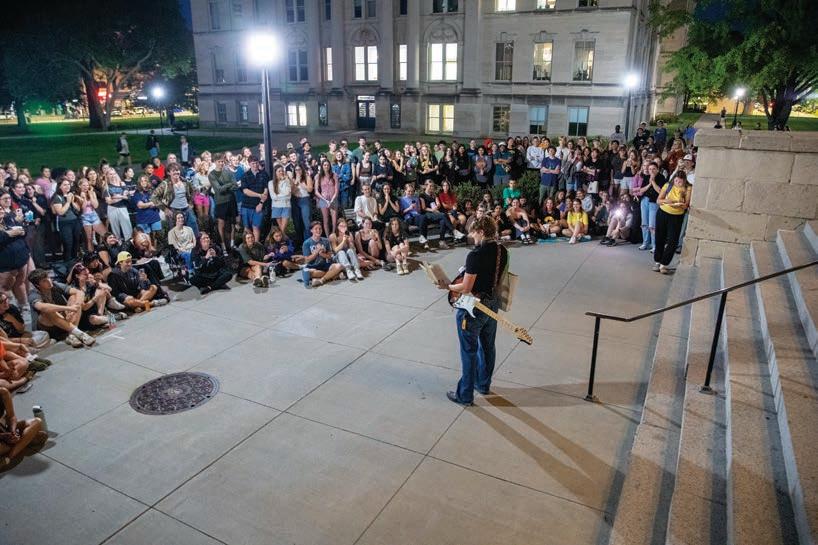UI research advances cystic fibrosis treatment
With new drugs emerging, patients begin to see life changes.


















Maren Denison, third-year student at the University of Iowa, was in sixth grade when she found out her lung function had dropped to 60 percent as half of her lung had collapsed and was scarred shut. As the weeks progressed, Dension’s lung function continued not to improve, and doctors told her she would have to live the rest of her life with just over half lung function.
When provided the option to participate in a new drug trial for cystic fibrosis at UI Health Care, Denison jumped at the opportunity. Within a few months of taking the drug, Denison saw her quality of life improve.

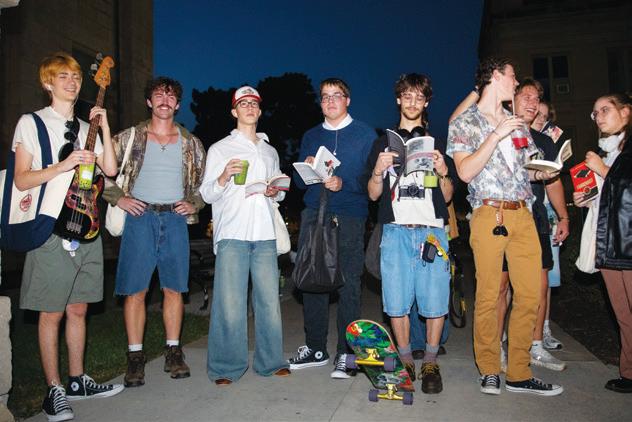







Cystic fibrosis is a genetic disease inherited in an autosomal recessive pattern, meaning both parents of an individual have an abnormal copy of the gene causing cystic fibrosis, Dr. David Stoltz, said.
Dr. Michael Welsh, a UI professor of internal medicine-pulmonary and critical care and occupational medicine, has led discoveries and collaboration in cystic fibrosis research, winning the 2025 Lasker-DeBakey Clinical Medical Research Award, according to UI Health Care.
The award was granted to Welsh by the Lasker Foundation for his advancement of cystic fibrosis research and the development of new therapies to combat the genetic disease. With multiple mutations of cystic fibrosis, Welsh and his team were able to identfy how



to correct defects within the cystic fibrosis gene.
Denison developed cystic fibrosis-related diabetes following her diagnosis at birth, alongside her twin brother.
“This [cystic fibrosis-related diabetes] was interesting to get because it is probably the hardest part of having cystic fibrosis, having to manage my diabetes for every second of the day,” Denison said.
Prior to the birth of her and her twin, Denison’s parents were told their babies had cystic fibrosis and then told they did not.
“It was a real awakening for my parents on how to handle that situation when me and my brother were born with CF,” Denison said. After spending 63 days
Local businesses respond to recent ICE arrest

Iowa City business owners protest the arrest of Jorge Elieser González Ochoa.
Within a day of the arrest, Ferguson had put up a sign on her shop’s window that read “Dear ICE: This Guatemalan store owner says keep out.” A clear sign she, as the daughter of Guatemalan immigrants, was refusing to stay silent on the issue or to permit ICE in her store.
“I still am haunted by the children separated from their parents, and the number of migrant children who never got reunited with their parents,” Ferguson said in the statement. “This is psychological torture against people of color. This administration wants us to have a common enemy, but these [families help] run our country.”
Iowa City business owners are protesting the arrest of Jorge Elieser González Ochoa by Immigration and Customs Enforcement, or ICE, by placing “No ICE” banners in their storefronts, hosting Know Your Rights training sessions, and speaking out on the issue.
The morning of Sept. 25, a video of González Ochoa being apprehended by three men
dressed in plain clothes who identified themselves as federal agents appeared on the phones of thousands.
The story would continue to grow, even appearing on national news outlets like CNN, and bringing new concerns to Iowa City’s downtown. What had up until that point been an understanding through online videos and national headlines suddenly became real.
The video sparked fear and outrage from viewers as they
watched González Ochoa be arrested in the middle of Bread Garden Market, his place of employment.
“I was absolutely horrified, and I felt violated,” Mónica María Ferguson, the founder and owner of clothing store CIELO in Iowa City, said in a statement to The Daily Iowan . “They chose the most peaceful, loving area to publicly and brutally arrest Jorge. It made me sick with anger.”
For members of Escucha Mi Voz, an Iowa City, faith-based immigrant workers’ rights organization, the arrest caused immediate worry, Getsy Hernandez, an organizer with the group, said. At the time of his arrest, González Ochoa was a member of the organization and was living at the Iowa City Catholic Worker House, which Hernandez said González Ochoa called following his arrest.
The call led to immediate action from members of both organizations, with Alejandra Escobar, community organizer with Escucha Mi Voz, rushing to Bread Garden Market as soon as she learned about the arrest.
Hispanic heritage celebrations return to IC
The weeklong celebration returned after a six-year hiatus.
A weeklong celebration of Latino culture has returned to Iowa City after six years, bringing with it a collection of pop-up exhibits, performances, and workshops celebrating Latino culture in Iowa during this year’s Hispanic Heritage month. Semana Cultural Latina returned to Iowa City after the pandemic caused a six-year hiatus since the weeklong celebration was initially organized in 2019.
The week of celebration began Sept. 25 with a screening of short films at FilmScene provided by the Mexican Film Institute and continued throughout the week with pop-up art galleries and workshops at Public Space One, The Englert Theatre, and the Iowa City Public Library. Concluding with a final performance “Entretejiendo Corazones: Música, Danza, Poesía y Memoria,” a performance, featuring various dance forms, music, and poetry and which featured a pop-up exhibit by Miriam Alarcón Avila. Titled, “Iowa nICE, Make Iowa
Nice Again,” the pop-up exhibit involved Alarcón Avila speaking to people through a sheet of ice to demonstrate how narratives of fear can distort our perception of people and lead to physical harm. Originally from Hidalgo, Mexico, Alarcón Avila is an artist and photographer who works on projects throughout the county. She is also one of the co-founders of Semana Cultural Latina and hosted an ofrenda-making workshop that over 30 people attended in collaboration with the Weaving Our Community Network and the Stanley Museum of Art in
the days leading up to Semana Cultural Latina. “I make an ofrenda with the intention for people to have a moment to honor


According to the National Library of Medicine, the Trikafta drug costs approximately $300,000 a year. “I am thankful I am able to be on this drug, but my hope is that someday for me and for other people,” Dension said. “They find a way to no longer have the CFTR gene that causes cystic fibrosis. This drug completely changed my life, so it would mean a lot.”
Denison said though she is an independent person, she finds support not only from her doctors at the hospital, but also through the online cystic fibrosis community.
With cystic fibrosis, Denison said she and others with the disease cannot be within six feet of each other as they can pass bacteria along to one another. As a result, most of Denison’s community and support system is remote.
in the neonatal intensive care unit, Denison remained out of the hospital until she was roughly 3 years old. She spent weeks in the hospital throughout her life due to her condition.
In 2017, Denison wound up in the hospital once again, this time for three weeks.
“This was really hard because I was already in school at this point, so it was completely different than what was happening to everyone else in sixth grade,” Dension said.
Dr. David Stoltz, a professor of medicine at the UI and chief of the division of pulmonary critical care and occupational medicine, said Trikafta is a modulator, a type of medication working to treat cystic fibrosis, containing three separate drugs. The drug targets the mutation in the CFTR gene known as delta f508.
Denison, a carrier of the delta f508 mutation, saw her lung function return to 100 percent and has been able to stay out of the hospital since.
“I could finally take a deep breath of air, and I kept telling my mom, ‘Mom, I can breathe for forever. This is amazing,’” Denison said.
Kelsey Logan, virtual connection senior specialist with the Cystic Fibrosis Foundation and carrier of the Cystic Fibrosis Transmembrane Conductance, or CFTR gene, was told she wouldn’t live past the age of 30. Now 37, Logan is the mother of two young boys and actively living with cystic fibrosis.
Many people like Logan have surpassed this life expectancy. According to the National Institute of Health, for those individuals born in the 1990s, the average life expectancy was approximately 40 years, a number that had doubled from the 1970s. Now, that life expectancy number can be up to 80 years old.
The number of adults and children living with cystic fibrosis in the U.S. is roughly 40,000, according to the American Lung Association. Roughly 1 in 30 people are a carrier of the CFTR gene.
Stoltz said on average, roughly 25 percent of kids whose parents are carriers of the CFTR gene go on to develop cystic fibrosis. Mutations within the CFTR gene are ultimately responsible for causing cystic fibrosis.
In Iowa, there were 447 individuals living with cystic fibrosis in 2024, according to the Cystic Fibrosis Foundation, a lower number in comparison with other states in the Midwest, such as Wisconsin, Minnesota, and Illinois.
According to the foundation, there are 1,148 people living with CF in Illinois and 755 in Minnesota.
The most significant difference many researchers are now seeing, Stotlz said, is the demographic makeup of those living with cystic fibrosis, with more adults than children currently living with cystic fibrosis in the U.S.
Historically, cystic fibrosis had been seen as a primarily pediatric disease, as many weren’t living past the age of 20, Stoltz said.
“Now people are going to live longer and longer… we used to never worry about cancer screenings or risk factor modification for heart disease because people weren’t going to live to the point where cancer was an issue,” Stoltz said.
Ashley Cooney, assistant professor in the pediatrics and pulmonary division at the UI, said cystic fibrosis manifests within the lungs as a result of a lack of chloride ions. A lack of these ions can cause dehydrated, viscous mucus that remains in the lungs, creating a breeding ground for bacteria and
chronic inflammation.
Physical blockage within the lungs due to this mucus can make it difficult to breathe, Cooney said.
One of the primary challenges of cystic fibrosis, Logan noted, is how routine or normal illnesses for individuals living without cystic fibrosis can be life-threatening and dangerous to those living with CF.
“Having a cold, a virus, or getting the flu may cause a healthy person to get knocked down for a week or so, but with CF it is very easy to get knocked down and stay down — and end up being hospitalized,” Logan said.
In February of 2024, Logan was hospitalized for the first time in six years due to an illness she may have picked up from her two young children.
“I only ended up in the hospital for five days, but I’m lucky that it wasn’t longer than that,” Logan said.”When I travel or go to conferences, I still wear a mask regardless of how safe things are.”
The genetic component of cystic fibrosis is important to Logan because she can pass down the CFTR gene to her sons. However, Logan’s husband is not a carrier of the gene, therefore neither of her sons has cystic fibrosis but they still may possess the gene.
As her children get older, Logan said she and her husband are considering genetic testing for their sons so they can be informed about whether they would pass on CF to their own kids in the future.
One of the most common features of cystic fibrosis, Stoltz said, is lung disease, a primary contributor to the morbidity, or the rate of a given disease, and mortality rate in those with cystic fibrosis.
Those who have cystic fibrosis are often prone to lung infections, Stoltz said. These infections are associated with inflammation in the lungs and a buildup of mucus in the airways. This can cause respiratory failure or require a lung transplant.
On Jan. 1, 2024, there were seven individuals awaiting a lung transplant at UI Health Care, according to the Scientific Registry of Transplant Recipients. By December 2024, there were 17 transplants through the hospital’s transplant program.
According to the Health Resources and Services Administration, the number of lungs transplanted in the U.S. in 2024 was 3,340, a significant increase from the previous year, which saw 3,026 transplants.
Stoltz said cystic fibrosis not only causes inflammation and mucus in the lungs but also affects nearly every organ in the body.
Cystic fibrosis can cause gastrointestinal, or GI, issues. These primarily manifest in the form of a bowel obstruction or affect one’s pancreas, Stoltz said. The pancreas serves two primary functions within the human body: producing pancreatic enzymes to aid in food digestion and regulating endocrine-related issues, such as blood sugar levels. For some with cystic fibrosis, Stoltz said, those pancreatic enzymes fail to be produced, and endocrine-related issues can lead to the development of diabetes.
Trikafta was approved by the Food and Drug Administration in 2019 for individuals aged 12 and older.
In December 2024, Vertex Pharmaceuticals approved the use of Trikafta for individuals aged 2 years or older.
Delta f508 is the most common CFTR mutation, Stoltz said, and is essentially stuck inside the cell. Typically, the CFTR mutation is located on the cell membrane.
Trikafta helps the CFTR gene move from inside the cell to the cell surface.
Small molecule treatments, such as Trikafta, benefit people who have modulator-responsive mutations, like delta f508, if they take the drug daily.
Logan, who started being hospitalized once a year for roughly 15 years prior to the emergence of Trikafta, sees the drug as a “game changer.”
Logan’s primary symptom of living with cystic fibrosis is coughing due to mucus and phlegm buildup. Working out or increasing her heart rate can exacerbate this issue.
“Coughing wears you out a lot, and the sicker you are, the worse it is,” Logan said.
During her pregnancy, Logan developed gestational diabetes because of her increased risk to develop the disease.
One of the therapeutic treatments included in an individual’s cystic fibrosis regimen is the vest, helping to loosen mucus in the lungs by vibrating the upper torso, Cooney said. Nebulizers are devices that deliver a hypertonic saline solution, which can be inhaled to aid with breathing.
“I am very lucky that I know I have minimal need for treatments because of that drug. Prior to that, I was doing the vest machine for 30 minutes a day and taking an hour of nebulizers in the morning and in the evening,” Logan said.
Though Logan and Denison are both able to take Trikafta, the drug is not a cure and isn’t always available to all living with cystic fibrosis.
For those who possess a cystic fibrosis mutation that does not respond to small molecule drugs such as Trikafta, Cooney hopes one day these individuals are eligible for genetic therapies, one of which includes Clustered Regularly Interspaced Short Palindromic Repeats, or CRISPR technology.
CRISPR, Cooney said, is an enzyme recognizing a specific sequence of DNA, such as the CFTR gene, that can cut DNA to induce an insertion or a deletion. This then allows for the editing of the sequence.
Roughly 10 to 15 percent of individuals living with cystic fibrosis are ineligible to receive specific drugs due to their specific CFTR mutation, Stoltz said.
This ineligibility, Cooney said, stems from the fact that there are over 200 different mutations of the CFTR gene, all of which are categorized into roughly six classes. Of these classes, the most severe mutations are unable to create a full length gene product, meaning the mutations do not respond to these small scale modulators.
Echoing a similar sentiment, Dension noted how expensive Trikafta is and how many people can’t afford it.
“It’s a lot of online activities with other people with CF who sometimes don’t actually understand what they’re going through, and you try to explain that to the best of your ability,” Denison said.
The Cystic Fibrosis Foundation gives Denison the opportunity to chat with people her age living with cystic fibrosis in Iowa.
Logan said the foundation runs three programs: virtual conferences such as Breathe Con, Research Con, and CF Circle.
Breathe Con allows those living with cystic fibrosis to share their own, unique experiences with one another without having parents, caregivers, doctors, and others listening.
Research Con is more open, allowing for anyone in the cystic fibrosis community, even those who are not actively living with it, who are interested in learning more about the disease itself.
CF Circle involves a mix of individuals, from those who have cystic fibrosis to family and community members, who wish to have discussion on various topics virtually.
Outside of her “virtual family,” Denison’s care team at UI Health Care have played a key role in her diagnosis.
“Every time I go to the doctor, I see multiple providers, and visits aren’t just one hour — I’m there the entire day,” Denison said Having a twin brother who is actively living with cystic fibrosis, Denison said, has helped her.
“That has helped a lot because he very much understands, even though everyone’s CF experience is very different from one another,” Denison said.
Logan said there is a need in the community for adults to be able to talk to one another. Through these virtual programs, many have been able to find differing ways to connect.
“They can talk about issues or challenges they are having but also share their celebrations and the hope and good things coming out of medical advancement, things we just never thought were going to be a possibility,” Logan said.
Researchers such as Stoltz and Cooney see these medical advancements as ways to figure out treatments for those who are ineligible for certain types of drugs.
“It’s trying to figure out what type of gene therapy approaches can be done for them and how we can correct the gene,” Stoltz said.
The only drug Logan is currently taking, which she never could have foreseen, for her cystic fibrosis is Trikafta.
“At age 37, the soft age my parents didn’t think I’d make it to, I’m actually as healthy or healthier than I’ve probably ever been,” Logan said.
Logan said with advancements in cystic fibrosis she and many others have had the opportunity to experience things they were told would never be on the table.
“My message is that the work is not done, and we need more support for adults with CF, and I hope that in my lifetime we’ll see a cure, but we just aren’t there yet, so we have to keep pushing,” Logan said.

“As soon as we found out, I mean, quite literally, our executive director ran to Bread Garden, and Alejandra drove there as fast as she could,” Hernandez said. “We were just outraged and worried, and we tried to get through as soon as we could to see what the situation was.”
Escucha Mi Voz shared the video of the arrest on their Instagram, and from there, local businesses in downtown Iowa City began reposting and responding to the video, sharing their frustration in comments under the video and by publicly displaying their frustrations at the rally Escucha Mi Voz hosted in Iowa City’s Pedestrian Mall to protest the arrest.
Bread Garden Market did not respond to The Daily Iowan ’s request for comment at the time of publication.
Katy Brown, the founder and CEO of Kitty Corner Social Club, also saw the
and to have some type of closure,” Alarcón Avila said. “Creating things like these, it helps not only to heal the past but to heal the present that we’re living in.”
The ofrenda, which has Indigenous origins, serves as a way of remembering and honoring ancestors and are typically made up of different tiers of photographs of deceased loved ones and decorated with papel picado, or cut paper, cempasúchil or marigold flowers, sugar skulls, candles, and incense.
For Alarcón Avila, the ofrenda connects her with both her culture and her family, especially her father, who passed away when she was 6 years old.
She recalled sitting with her sisters at her family’s ofrenda and waiting for any sort of sign that her father had visited during Día de los Muertos: a bite being taken out of the pan de muerto or a glass of water being half-drunk.
As she grew up, she realized that her father’s spirit as well as the spirits of everyone’s loved ones returning to visit on Nov. 1 and Nov. 2, wasn’t consuming the food, but the love family members also offered through the labor of making an ofrenda.
By continuing to make ofrendas and teaching others about this tradition, Alarcón Avila sees this as not only helping people heal and remember their deceased loved ones but also to remember where they’ve come from.
Remembering where one comes from is especially important, Alarcón Avila explained, as the U.S. Immigration and Customs Enforcement, or ICE, continues to aggressively arrest members of the immigrant communities across the U.S. This includes the recent arrest of Jorge Elieser González Ochoa at Iowa City’s Bread Garden and Des Moines Public School Superintendent Ian Roberts.
“People forget that in order for you to be here, there were generations who made paths for you to be able to be in this time,” Alarcón Avila said. “We were all immigrants at some point, or our ancestors came from someplace else, so by remembering that, I hope it will give people empathy. We cannot forget where we come from because it’s the only way for us to know where we’re going.”
As Alarcón Avila explained, both the ofrenda and Semana Cultural Latina serve as a form of resistance to the fear incited by the threats of ICE arrests under the Trump administration. The celebration is a way of refusing to live and share their culture in fear, she said.
“Semana Cultural Latina is resistencia, pure resistencia,” Alarcón Avila said. “We’re showing the most beautiful things. Art, love, so many beautiful ways that immigrants have spread to this country
video Escucha Mi Voz had posted to its Instagram and reposted the video of the arrest on her business’s Instagram page. Her store also has a sign reading “ICE not welcome.”
“I was shocked, horrified, physically sick, and immediately angry that it was happening in our community,” Brown said.
Since the arrest, Brown said the Iowa City Downtown District reached out to business owners to provide them with training on knowing their rights so business owners can be better prepared if ICE visits their location.
The training included how to know the difference between designated public and private areas, and which areas ICE is permitted to enter without a warrant. Brown said knowing this information is the most important way business owners can protect their employees.
“We’re playing by a different set of rules, and what they did was illegal. It was an illegal raid and kidnapping,” Brown said. “I wouldn’t trust ICE to even enter my building under any situation.
We are a safe space. We are always a safe space for anyone in the community.”
According to the National Immigration Law Center, or NILC, an organization established in 1979 to advocate for the rights of low-income immigrants, public spaces are open to everyone, including ICE agents, without permission from a business owner.
These spaces can include dining areas, parking lots, and waiting areas, though, according to the center, being in these public areas doesn’t give ICE the authority to arrest just anyone.
Private areas, on the other hand, are areas designated as not open to the public, requiring a judicial warrant signed by a judge in order for immigration agents to legally enter the areas.
This is not the same as an administrative warrant, which, according to the NILC, doesn’t allow immigration agents into private areas without the permission of the business owner and is not a warrant from the court.
Escucha Mi Voz also hosted its own Know Your Rights training at its Work-
force Committee meeting on Sept. 27, two days after the arrest, and on Oct. 4, where attendees learned how to defend their rights at work, especially with the risk of ICE arrests taking place there.
Hernandez said knowing these rights can prevent deportations and protect workers, and the organization is planning on hosting another Know Your Rights training in the future.
“It is important to have trainings, especially because you never know how you’ll respond when that situation happens,” Hernandez said. “It’s important to have that background ahead of time in case anything does happen.”
Hernandez emphasized the importance of organizing and staying involved with local groups such as Escucha Mi Voz and the Iowa City Catholic Worker House that support immigrant communities and immigrant workers through their efforts.

from all around the world.”
Seso Marentes is a multidisciplinary artist from Des Moines who taught a printmaking workshop at Public Space One as a part of Semana Cultural Latina.
Through his work, Martenes explained, he hopes to encourage more Latinos to make art, regardless of the resources they have, and his workshop with Semana Cultural Latina was one way he could showcase this, alongside celebrating the Latino community, though he said he wishes it were longer than a week.
“Really, that’s what it’s all about, just shining the light on our community and hopefully opening doors for other Latino artists, but also finding doors to knock on so those can be open too,” Marentes said.


“I’d like to see it happen more than just that time of the month. I want to see it happen every day, every week, every month, we’re celebrating something about our accomplishments, and we’re really solidifying that idea that we can do anything that we want to do.”
Similarly, Sam Hernandez, the lead dance instructor for Fuerzas Culturales Ballet Folklórico, which performed at the Iowa City Public Library on Oct. 2, spoke about the importance of celebrating culture through art because people who watch a performance are able to connect with and appreciate a culture simply by watching.
“Especially right now, I think being proud of our culture or just culture in general, and expressing it through dance, it’s a very beautiful and creative way to express it,” Hernandez said. “Showing people we’re here, we’re proud.”
The library also hosted West Liberty-based Eulenspiegel Puppets’ performance, “Nacho and Yoyo’s Escapades,” as a part of Hispanic Heritage month and Semana Cultural Latina, which tells the story of an escaped circus monkey and a chihuahua, with Iowa City’s first Mexican neighborhood as the backdrop.
The barrio, which first appeared along the railroad tracks located between South Dodge Street and South Van Buren Street, was made up of boxcar homes that housed the initial


“Organizing is a huge part of preventing these things,” Hernandez said. “Organizing in whatever ways that you can and getting people involved.”
inhabitants of the neighborhood, primarily men who worked on the railroads and their families.
The neighborhood was eventually destroyed in 1936 after the Chicago Rock Island and Pacific Railway began removing the boxcar homes after facing complaints from residents, according to the University of Iowa’s Migration is Beautiful project. Monica Leo, a puppeteer with and founding member of Eulenspiegel Puppets, remembers the neighborhood. The history of the neighborhood and its inhabitants became a vehicle for the performance, she said.
“Where would we be without our Latino immigrants?” Leo asked. “When you travel around Iowa, you can tell which towns are the ones that have embraced their immigrants because they’re the ones that are alive and thriving.”
Though Semana Cultural Latina has concluded, many of the pop-up exhibits are still open through October.
“Going and celebrating, dancing with neighbors, sharing food and tacos, learning guitar in the workshop, or writing your stories, that is resistencia,” Alarcón Avila said. “Our culture is powerful because it comes from the love from all our abuelitos — or grandparents — generations and generations that gave their lives to give us this life. And we cannot waste it, we have to enjoy it, and if we enjoy it together, it’s even better.”


ICE’s conduct is undemocratic

The Republican Party’s attempts at sowing chaos through fear was on full display with the violent, public arrest of Bread Garden employee Jorge Elieser González Ochoa.
As of July, Immigration and Customs Enforcement, or ICE, has made a total of 527,459 arrests nationwide, according to ICE’s arrest data. ICE splits its operations by dividing the country into 25 areas of geographic responsibility. There are a total of only 12,955 arrests in the St. Paul area of responsibility, which includes Iowa. While the data is widespread, the conse uences of these arrests are felt in the a icted communities — including Iowa City.
On Sept. 25, González Ochoa, a Bread Garden employee, was violently dragged, tackled, and wrestled from his place of employment by ICE agents disguised in casual everyday attire. You can find the “thugs” in ironic “WANTED” posters plastered across town condemning the agents for arresting González Ochoa without a warrant.
In the nearly three-minute video of the arrest taken by a bystander, there are repeated re uests for identification from the two agents the only identification they seem to get is glimpses of the tasers on the agents’ belts and the handcu s jammed onto González Ochoa’s wrists. From the bystanders’ perspective, these men could have been anyone.
Arresting González Ochoa in a public place an hour before noon was as intentional as it looks. It was a calculated show of force. It seems U.S. democracy has evolved from being a game of cooperation working for a better nation to a game of war, as the focus shifts toward staying in power and
demonstrating “strength.”
I asked Pastor Ryan Downing, who attended the rally for González Ochoa the day after his arrest, what he thought ICE was trying to communicate by arresting González Ochoa at his workplace in the middle of the day.
“I think that those kinds of tactics are intended to send a message to the community. That ICE is here. ICE is present. ICE is active, and their intention is also to sow fear in both the immigrant community and the non-immigrant community,” Downing said.
ICE is arresting pillars of the community, workers, fathers, and leaders. And they’re doing it in broad daylight just to make sure we witness the current administration’s power. Don’t get things twisted, ICE uses “intelligence-driven operations to prioritize its enforcement actions in ways that help protect communities nationwide,” according to its website.
González Ochos arrest was done in the most public place possible to make it clear they can reach anyone, our community is not safe, no matter how vital that person might be to the community. The superintendent of Des Moines Public Schools, Ian Roberts, was also detained by ICE this month. Roberts, superintendent of the largest school district in Iowa and a former Olympian, was labeled a “criminal illegal alien” for owning a firearm while being undocumented. It’s worth mentioning Roberts was driving a school vehicle at the time of his arrest, where law enforcement foung a loaded handgun, hunting knife, and 3,000 in cash.
However, the message ICE is sending seems to be clear nobody is safe, nor is ICE only going after “dangerous criminals.” ICE agents are not to trying to improve the community but rather make mayhem.
Fearmongering is a continued strategy used by the GOP against our community, just as the party intended to do with their undercover operations, which included hidden cameras used to capture footage of University of Iowa employees trying

to get around the DEI ban over the summer. Meanwhile, we’ve been bombarded around the country by increasingly frightening messages, namely from the president himself.
Trump’s tactic of casually saying the most frightening thing he can hasn’t changed. On Sept. 30, according to The New York Times , in an address to U.S. military leaders, Trump told the defense secretary they should begin to use “dangerous” cities around the U.S. as training grounds for the military. Despite the erratic nature of his speeches, these are further attempts to drum up fear and chaos.
But it should be remembered that it was his supporters who rose in a violent panic to raid the White House on Jan. 6.
Trump thrives on his ability to cause scenes as a distraction from the administration’s ridiculous policies and changes.
ICE uses fearmongering tactics in communities nationwide, now including Iowa City. How Trump’s inevitable absence will a ect politics across the aisle.
The last uestion I asked Pastor Downing was whether he thinks fear-mongering will work. In a message of hope, he disagreed. “I think what we saw on Friday with the press conference is that this community does not scare easily,” he said. The community Pastor Downing speaks about represented itself at a protest on the day after González Ochoa’s abduction. Over 300 community members were present. I was at the event, and it appeared to be much more, with people climbing on top of planters just to get a view of the speakers. If there was any fear in the people there, you would not know it instead, you would only feel the rage of a community defiled by the government that swore to protect it. One chant soared above the rest and took the crowd it was as crass and brutal as González Ochoa’s abduction: “F- - - ICE.”
The future of politics beyond Trump

At some point, President Donald Trump will leave politics. Even without him at the helm, MAGA will continue.
Since Trump first took o ce, uestions of whether he is mentally and physically unfit for the job have loomed.
As his term continues and limited information is released regarding his health, including but not limited to swollen ankles, bruised hands, and rapid weight loss, the public continues to wonder if he will be able to fulfill his term.
An Instagram account with the username “didhedietoday” has dutifully tracked whether or not the “he” has died since March 21. Although it is never specified to who they are referring, the account promotes a sense of optimism and inevitability of the event for its nearly 306,000 followers. Some posts simply answer: “No.” Others answer more descriptively, such as “No, but it feels like any day now.”
Is it undue optimism, unnecessary concern, or genuine and deserved worry?
Whatever the president’s health may be, the speculation surrounding it raises uestions about the future of politics and what the “Make America Great Again” movement may look like following his inevitable exit from o ce.
There have been concerns, too, that Trump will not leave o ce at all, instead finding a loophole to run for a third term. His recent comments about postponing the election if the U.S. is in a war have left people worried about the 202 election. But many supporters are all for another Trump presidency. Timothy Hagle, political science professor at the University of Iowa, is nearly certain Trump will not seek a third term.
“He’s not going to run. He can’t run again. It’s unusual his two terms were divided,” he said. Hagle said he did not find anything serious about the health speculation, and it
is not unusual for a president to withhold personal health information out of national security interests, among other reasons.
The whole notion of what’s called the MAGA movement, it’s really more than Trump,” he said. “What Trump tapped into was an underlying feeling a lot of people had, and in that sense, it’s not unlike what happened in the Tea Party movement back around 2010.”
The appeal of the Tea Party movement, and now of Trump and the MAGA movement, is the focus on average voters, who Hagle calls “normies” who vote on “kitchen table issues.”
Trump was the Tea Party Movement’s path to power. With its roots in white Chrisitan nationalism, it is clear its in uence extends to the GOP and president currently in o ce.
“Should Donald Trump no longer be in o ce, MAGA supporters will continue to show much loyalty to him and his views,” second-year UI student Ivy Santeler said.
“However, in a much broader political sense, I think his absence from o ce will be a di cult and uncertain time since we seem to be without political successors who have the same gravitas or dedicated following as Trump does. In recent years, the Democratic Party, especially, has, frustratingly, been without a strong leader or clearly defined goals.”
Indeed, Trump has yet to endorse a candidate to fill the large shoes he will leave. It is di cult to imagine someone maintaining the same gravitas, gusto, and charisma Trump is known for.
He has been hesitant to fully endorse Vice President JD Vance, to whom the endorsement might logically fall, although he’s expected to make his o cial endorsement ahead of the midterms.
Democrats are navigating a di erent path in the lead up to midterms.
“None of these [potential Democratic candidates] stand out,” Hagle said. “There are some possibilities and certainly folks would run, but is there somebody there isn’t going to take the extreme left position That’s the problem that the Democrats have.”
A more balanced and expanded base may be a key approach for Democrats run-
ning for o ce. According to a Gallup poll, support for a more moderate Democratic Party among Democrats and left-leaning independents has increased by 11 points to 45 percent since 2021. Meanwhile, the 27 percent of Republicans and right-leaning
But if the economy is stable or better than expected, it will be extremely di cult for Democrats to take the lead. Though given the government shutdown and tari s, a Democrat lead seems implausible right now.
independents has not significantly changed since 2021.
The 202 election will be dependent on the economy and the midterm elections, Hagle said. If the economy suddenly tanks, it will be di cult for Republicans to maintain a majority in the midterms, even more so in 202 .
“My hope for our future is that Trump’s absence and the following uncertainty will be motivation for good faith discussion across political lines, allowing us to become stronger as a whole and begin closing the vast political divide that is weakening our democratic integrity,” Santeler said.

Bridging rural health care challenges
Wellmark Foundation’s $5.3 million drives Simulation in Motion-Iowa statewide.
of counties are now considered maternal care deserts, according to the Iowa Coalition for Reproductive Freedom.
In rural America, where funding cuts and hospital closures threaten access to health care, programs like Simulation in Motion-Iowa, or SIM-IA, mobile trucks providing clinical training to local communities in Iowa, are stepping in to fill the void.
With a recent five-year 5.3 million funding boost from the Wellmark Foundation, a nonprofit funding projects tackling health barriers in Iowa and South Dakota, SIM-IA will continue its mission to provide lifesaving training and resources to underserved communities across the state.
According to the National Institutes of Health, rural Americans face higher risks of premature
Additionally, federal Medicaid spending in rural communities is projected to decline by 13 billion over the next decade under the reconciliation package enacted in July. aiser Family Foundation, or FF, a non-profit, nonpartisan organization providing information on national and global health policy issues, reports exceeding the $50 billion allocated through the Rural Health Transformation Program.
“Senators from both parties have raised concerns about potential impacts on rural hospitals and other providers, particularly given the ongoing trend of rural hospital closures,” the organization reports.
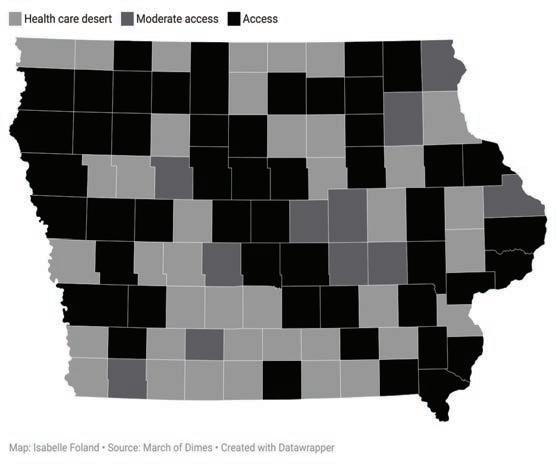
death from heart disease, cancer, stroke, and other major illnesses.
Many rural areas lack access to health care and enough doctors, the agency adds, forcing residents to travel long distances for care.
Rural health care facilities often have outdated technology or access to CT scanners and magnetic resonance imaging, or MRIs, and rural hospital closures are growing, leaving communities without nearby emergency care.
In Iowa in 2024, 57 percent of counties have no hospitals o ering obstetric services, and a third
Launched in 2022, SIM-IA has sent trucks to 86 counties in Iowa annually, 32 of which are maternal care deserts, meaning they lack labor, delivery, or postpartum care.
“We want to get better patient outcomes in the state of Iowa,” said SIM-IA program director, Brian Rechkemmer. “We

[want to] do those trainings and be able to make them feel a little bit more comfortable.”
The program’s funding will help continue to train people in rural areas like LeRoy, Iowa, a town with a population of 11 according to the 2020 census, and other isolated communities where emergency services are scarce or reliant on volunteers, he adds.
“We want to make sure that the person in LeRoy gets the same training that the person in Des Moines gets,” Rechkemmer said. “We want everybody to get that same standard of care. And that’s why it’s so important to have this Wellmark donation to go out to these local communities and do that training.”
SIM-IA operates three trucks stationed in Swisher, Des Moines, and Sioux City, covering the eastern, central, and western parts of the state, according to SIM-IA senior advisor Cormac O’Sullivan.
“We can go to schools, we can go to community centers and let people practice CPR,” he said. “We can teach them how to stop bleeding if they have an acci-
dent at home. We can work with high school, community college, or university students.”
Since its launch, O’Sullivan added, the trucks have traveled over 80,000 miles across the state, although there can be hurdles, like weather and scheduling times, to reaching people in rural areas.
“All the EMS out there are volunteers,” he said. “Trying to get a common time when they’re all available and can all benefit from the training is one of our biggest challenges.”
SIM-IA Senior Advisor Jacinda Bunch said the 5.3 million provided from the Wellmark Foundation will help keep the program going strong, covering the cost of sta , supplies, and fuel for the next five years.
“Without that money, we wouldn’t have the income to be able to offer free training to EMS and to critical access hospitals,” she said.
SIM-IA training has been a benefit to UI students as well, offering real-world experience in rural health care settings, Jeff Artioli, a 2024 UI graduate, said.
Artioli used the program while working on his capstone project to become a certified registered nurse anesthetist. He traveled to Mason City in August 2023 and created scenarios based on what was needed there, including conducting a simulation on a pregnant woman and a toddler with the u.
“The idea behind it was, ‘Let’s get you guys to practice something you don’t do frequently but scares you,’” he said. UI students can get involved with SIM-IA through graduate programs or by reaching out to the program directly.
“We love to engage with them, give them a chance to kind of see what’s involved with the simulation, and see what exists in their local communities during the semester,” Bunch said.
Bunch said she is grateful SIM-IA received the donation, as for many rural communities, it o ers an important service to Iowa citizens.
“We’re very thankful to Wellmark for recognizing the importance of being able to keep this training going in for rural Iowa,” Bunch said. “This doesn’t cover everything that we’re doing and all of the education that we’re providing, but it does provide for that rural coverage over the next five years.”
Sports facility to be built in North Liberty
The complex is to be completed in 2026 and will house Murray Elite Basketball.
Former University of Iowa basketball player and Murray Elite Program Advisor enyon Murray is building a new sports facility in North Liberty.
The new facility will be located at the southeast corner of Dubuque Street and North Liberty Road on roughly four acres of land.
The building itself will be a one story, 44,000 square foot facility, Murray said in a recent presentation to the North Liberty City Council.
The project timeline has a goal of being finished before Dec. 31, 2026, with estimated project costs around 13 million, Murray said.
Murray Elite is receiving $5 million through investors, specifically venture capital investors.
The rest is being financed through a banking lending institution.
For over 20 years, Murray Elite Basketball has provided opportunities for young athletes in the Iowa City area to play competitive basketball. Murray Elite Basketball is a grassroots basketball team working to train athletes to reach their full potential as players and members of society.
The program emphasizes training that creates well rounded athletes on and off the court by working to improve athlete’s discipline, teamwork, and resilience.
Jamie Pettigrew, executive director for Murray Elite, said the decision came after years of struggling to find gym space in the community.
“Historically, we always practiced in various schools in the Iowa City School District, but as we continued to grow, we realized it’s getting more difficult to find spaces [to practice in] because more and more programs are popping up in the area,” Pettigrew said.
Murray Elite is partnering with Elite Fitness, a gym located in Cedar Rapids, with the creation of the new facility. Along with basketball courts, the fitness center will also include a workout facility provided by Elite Fitness, along with a strength and agility section of the building.
Pettigrew said Murray Elite would also be open to potential partnerships with Liberty High School, since the school is directly across the street.
Murray Elite recently sponsored the Liberty High School Color Run in September, kickstarting their partnership with the school.
A goal in the program is to create financial opportunities for athletes in the area.
The team has helped over 100 high school athletes get Division I scholarships and over 90 athletes get Division II scholarships.
The program has produced a number of notable UI athletes, Pettigrew said, including Connor McCaffery, Patrick McCaffery, Austin Ash, Jarrod Uthoff, and Joe Weiskamp.
“We’ve been blessed to have so many guys come from our program and stay home in Iowa to play,” Pettigrew said.
Murray said he feels the new facility will set itself apart from competitors, making it a destination in








the Iowa City area.







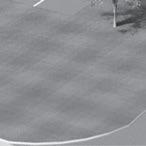
“When you have a physical therapy company, 24-hour fitness center, and court space to do a number of activities, which obviously includes basketball, we really separate ourselves from what other facilities like ours are doing,” Murray said.
Emerson Adams, a student-athlete at Liberty High School, said she sees the addition of this new sporting complex as a positive to the community, as the Liberty gyms will be more accessible to student athletes.
“Our gym space is always limited at Liberty, and with multiple sports taking place at the same time, it can be very difficult to schedule practices,” Emerson said.
North Liberty is a growing community, going from a population of 20,393 in 2022 to 20, 2 in 2023. Liberty High School is relatively new, opening nine years ago.
Because of these things, Emerson said she believes it is important to establish a strong culture within the basketball community in the area.
“I feel like this new facility will really help define the basketball culture in our community. It will give players in the community a chance to improve,” Emerson said.
As the construction begins, Pettigrew said he wants to emphasize the foundation of Murray Elite is to teach athletes skills that go beyond the court.
“Basketball teaches young people so many values that carry over into life. What we are here to do is help you get a college education using the game of basketball so that when you are done, you can be a productive member of society,” Pettigrew said.
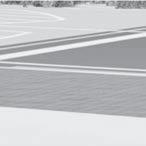









Food assistance cuts for Iowans spark concern
Food stamps face biggest budget cut in history as grocery prices climb.
Ryan Renger, a student at the University of Iowa’s College of Law, was shocked at how sharply grocery prices have increased after comparing his recent Walmart receipts to those from two years ago. While Renger himself has not had to worry about his next meal, he said he sees many of his classmates struggling to figure out how to pay for their groceries.
According to the Midwest region data from the Consumer Price Index released each month to track in ation, food prices are up 3.2 percent since August 2024 and continue to rise.
Renger recognized a uni ue di culty of being a graduate student. With the rising cost of living, the responsibility of paying for school, rent, and groceries coupled with the inability to make a sustainable income as a full-time student, many are struggling to make ends meet.
“Nobody should have to cut the things they enjoy out of their food budget because food is the best thing in life,” Renger said.
At the UI, 38 percent of undergraduates and 32 percent of graduate students reported low or very low food security in 2025, according to the 2025 UI Basic Needs Assessment Report.
The stress of paying for groceries could be compounded by a decrease in access to federal food assistance programs for many Iowa families due to recent federal funding cuts.
The “One, Big, Beautiful Bill Act,” which President Donald Trump signed into law in July 2025, will slash $187 billion in federal food assistance funding over the next decade in an e ort to pay for trillions of dollars in tax cuts. The Iowa Hunger Coalition anticipates this will result in a $1 billion reduction in food assistance funding to Iowans over the next decade.
The Supplemental Nutrition Assistance Program, or SNAP, provides federal food purchasing assistance to low-income individuals falling below the federal poverty level, which sits at $15,650 a year for an individual in 2025. To qualify for SNAP in Iowa, gross income must be at or below 130 percent of the federal poverty level.
The cuts — coming in the form of eligibility restrictions, increased work requirements, and shifting financial responsibility to states — represent the largest funding cut in the program’s history.
Democrats and anti-hunger advocates say the “One, Big, Beautiful Bill Act” makes SNAP less accessible, disproportionately impacting vulnerable populations while damaging the economy. Republicans who voted in favor of the bill say it strengthens the SNAP program while reducing wasteful government spending.
Iowa Sen. Janice Weiner, D-Iowa City, said there are many “hidden faces” of food insecurity, which include students. She said SNAP allows individuals to get back on their feet after di cult times and cutting the program is “extremely short-sighted for the future of our country and our state.”
“We are supposed to be the state that feeds the world,” Weiner said. “How is it that we can’t feed our own people?”
Iowa Sen. Sarah Trone Garriott, D-Windor Heights, said cutting SNAP will result in more individuals relying on charity programs, such as food pantries, for meals.
“It is going to be devastating for our state,” she said. “The food pantries are already stretched thin.”
Trone Garriott works as the coordinator of interfaith engagement at the Des Moines Area Religious Council, or DMARC, which operates a large food pantry network in the Des Moines area.
Both U.S. Sen. Joni Ernst, R-Iowa, and U.S. Sen. Chuck Grassley, R-Iowa, along with all four of Iowa’s U.S. House Representatives, voted in favor of the funding cuts in the “One, Big, Beautiful Bill Act.”
“Senator Ernst is working to improve and bring back integrity to the outdated and mismanaged SNAP system to ensure benefits are getting to hungry families who need them — not scammers or ineligible

bureaucrats,” an Ernst spokesperson said in a statement to The Daily Iowan.
Grassley said he supported the reconciliation bill because it extends tax cuts from the 2017 Tax Cuts and Jobs Act, expands the Clean Fuels Production Tax Credit, and reduces wasteful government spending within Medicaid and SNAP programs. “ We delay costly regulations that hurt patients and providers, especially those living in rural America,” Grassley said in a Senate oor speech on June 30. “We stop Medicaid and Medicare resources from going to illegal aliens. Most importantly, we preserve the Medicaid program for those who most need it.”
As federal SNAP cuts increase the likelihood of reduced food assistance spending by $1 billion over the next decade, Iowa food pantries expect to continue seeing increased foot tra c as food insecurity rises in the state.
Food pantries throughout the Iowa City area and around the state have seen a steady increase in visitors over the past few years.
The Coralville Food Pantry has reported a 22 percent increase in tra c from August 2024 to August 2025, according to data provided by the pantry. The pantry is not alone — North Liberty Community Food Pantry served 1,082 households in 2024, and the pantry has already served 1,097 so far in 2025.
Luke Elzinga, chair of the Iowa Hunger Coalition, which advocates against hunger in Iowa, said he has seen a record increase in food pantry usage around the state.
Meanwhile, a decrease in food provided to pantries has strained funds and resources for pantries. Kim Guardado, director for the food reservoir at Hawkeye Area Community Action Program, or HACAP, a food bank which distributes to the North Liberty and Coralville food pantries, said it has seen a decrease in food provided by the U.S. Department of Agriculture, or USDA.
“As we look forward to a potential in ux, we are all concerned about the level of strain that could be put onto an already strained system,” Guardado said in a statement to the DI
While food pantries are already struggling, cuts to food assistance could push them to the brink as charities attempt to fill the gaps left by dwindling food assistance spending. Elzinga expects pantries to
continue to break records as the e ects of cuts to food assistance programs are exacerbated by rising grocery prices.
Trone Garriott said food assistance cuts will increase stress for Iowans who have already had to change what can fit in their grocery budget due to rising prices.
“If [the state of Iowa] cuts SNAP benefits, that means the folks who are getting a little bit of relief from those SNAP benefits are now going to be entirely seeking help from the charity programs,” Trone Garriott said.
Annette Hacker, chief communications and strategy o cer at Food Bank of Iowa, which provides food to 700 meal sites across 55 counties in Iowa, said SNAP is the most e ective hunger relief program.
“For every meal a Feeding America Food Bank can provide, SNAP provides nine,” Hacker said.
However, the federal SNAP program does not help many of the people who need food assistance in Iowa.
Feeding America, the largest hungerrelief organization in the nation, estimated
“It does help relieve some financial stress for families as they are trying to find employment — families that are struggling and may have barriers preventing them from finding employment,” he said. Additional work reporting requirements means additional paperwork for SNAP applicants. Elzinga referenced this as a potential “ordeal mechanism,” or method of intentionally making programs or services harder to access, with the idea that only the most needy will go through with the burdensome process to receive assistance.
Elzinga said he has talked to individuals at food pantries who decided the application process was too much of a hassle or too confusing for people to know how to maintain benefits. Bobst had similar experiences at the North Liberty pantry.
“Years of added red tape and unnecessary verification checks have become so burdensome that a program intended to feed people is woefully underutilized,” North Liberty Food Pantry Executive
one in eight Iowans face food insecurity in 2025, while one in seven people face food insecurity nationally. The same study found among those who are food insecure, only 39 percent ualify for SNAP benefits.
Iowa Hunger Coalition estimates 23,000 Iowans will see their SNAP benefits eliminated or reduced out of the 272,818 Iowans on SNAP.
There are already two work reporting requirements provided by the USDA to qualify for food assistance. These rules require food assistance recipients to be actively searching for employment, work, or be involved in a training program at least 80 hours a month for adults aged 18 to 54. Those who do not meet work requirements are only eligible for three months of benefits every three years.
With the reconciliation bill, the work requirements have expanded to adults aged 55 to 64, parents with children 14 and older, veterans, the unhoused, and those aging out of foster care.
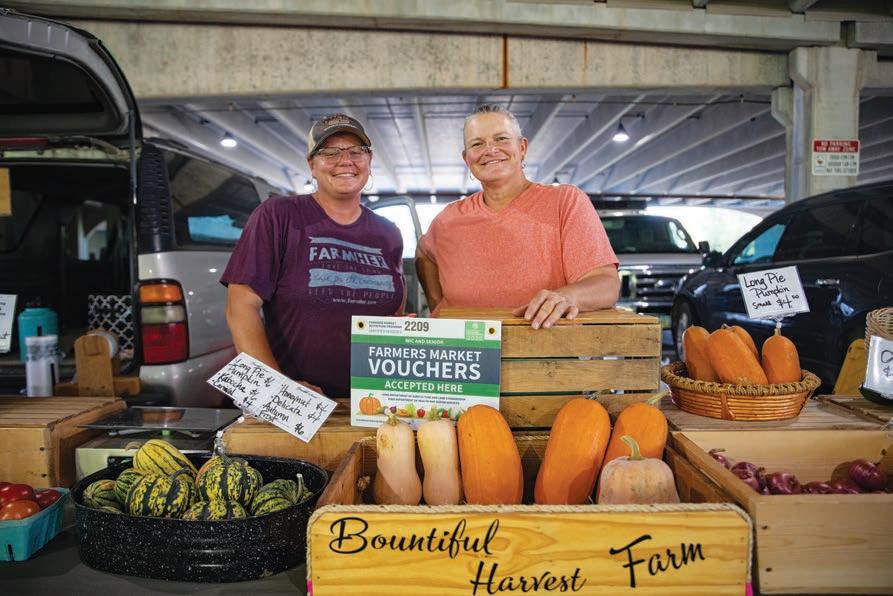
The USDA confirmed states should implement new work reporting requirments on Nov. 1, according to the USDA’s website.
Iowa Hunger Coalition estimates, based on Congressional Budget O ce models, expanding work requirements alone will result in $252 million in lost funding over the next decade to Iowa.
Data from the Iowa Department of Health and Human Services shows able-bodied adults only make up 3 percent of households receiving benefits. Elzinga said the requirements discount the nuance surrounding the reasons people struggle to find consistent employ-
He said the statistic explains work requirements don’t encourage Iowans to find employment rather, they form a barrier for food-insecure people trying to find stability.
“Nutrition support actually helps people find and maintain employment when you know your nutritional needs are being met,” Elzinga said.
Elzinga said critics of the looser, previous work requirements argue people would intentionally live o SNAP so they don’t have to work, which Elzinga said would not be possible.
He added that benefits average $6 per day.
Director Ryan Bobst said in a statement to the DI.
While 932 households served by the North Liberty Food Pantry have been SNAP eligible in 2025, only 233 are participating in the program.
According to the SNAP map from Iowa Hunger Coalition, 17.46 percent of the SNAP-eligible population is not enrolled in the program. In addition to increasing work requirements, state governments will have to shoulder additional administrative burden and expenses to maintain the program. SNAP is funded by the USDA, but it is administered by individual states. Currently, Iowa and the federal government split administrative costs 50-50. Starting fiscal year 202 , beginning Oct. 1, 2026, states will take on an additional 25 percent of the cost.
Iowa Hunger Coalition estimates the shift will cost the state an estimated $13 to 15 million per fiscal year. The state will be faced with a budget gap as a result, leaving an uncertain future and potential for even greater cuts to the SNAP program at the state level.
UI wconomics professor Anne Villmil said SNAP benefits have a multiplier e ect on the state economy. In Iowa, it is estimated every dollar spent on SNAP benefits equals $1.54 in economic activity.
“When people get [SNAP] payments, they go to the grocery store and they buy more, and then that filters on elsewhere in the economy,” Villmil said.
Villmil said not only will grocery stores su er, but SNAP cuts will pose a supply and demand problem within the state.
“When cuts occur, demand for food banks will go up, the economy slows, and there are fewer donations [to food banks],” she said.
Villmil said cuts will not only impact SNAP recipients, but all of Iowa, as the program has provided an economic stimulus for the state.
Elzinga said, historically, SNAP enrollment peaks when there is an economic downturn and dips when the economy improves.
“SNAP is at a 17-year low in the state of Iowa right now, and we have food banks and food pantries breaking records,” Elzinga said.
UI first-year juggles pageant life and academics
Charlotte Lange will represent Iowa at the Teen USA competition.
a balancing act.
“I’m going to be honest, there are days where I have a hard time compartmental izing what’s going on,” she said. “I feel like I’ve started to get a better balance now.”
Charlotte Lange, a University of Iowa, first-year student majoring in business and planning to pursue social media and marketing, was crowned Miss Teen Iowa USA on Aug. 10.
The Johnson, Iowa native is now headed for the upcoming Miss Teen USA competition in Reno, Nevada, from Oct. 1 -23.
Lange said she learned her voice is her superpower, and she can make a di erence by using it because of pageants. She views her pageantry platform as a tool to carry out her initiative. “Let’s get L.O.U.D.,” which stands for “Lifting Others Up through Demonstration.”
Since Lange was a kid, she said she’s been loud and confident. People used to tell her she was too loud, but through her recently-launched YouTube channel series, “The Pageant Podcast,” she is using that trait to inform and build confidence in other women.
“It all connects together who I am, my podcast, and my initiative into this one big, beautiful bubble,” she said. “My initiative is to help girls feel more confident
Lange said if she is thinking about pageants while doing homework, she writes it down and comes back to it when she’s done.
Lange said it has been fun to talk to people on campus about pageantry, and those she’s talked to have been interested and supportive. As for the UI, the college has allowed Lange to step into Miss Teen Iowa USA while being a student, like wav ing to the children in the UI Health Care Stead Family Hospital from the field at homecoming.

“The University of Iowa has helped me gain more opportunities with my crown and sash, which I really appreciate,” she said.
Lange decided to attend the UI because she is a fourth-generation Hawkeye on both sides of her family.
“I’ve been here for years and always loved the environment the people, the football games, the city life it feels like a big family here. When I visited it, clicked for me and felt like home,” Lange said. In addition to being a college student and Miss Teen Iowa USA, Lange is rushing a sorority this fall and is in the Hawkeye

Michelle Lange, Charlotte’s mother, said the journey started with Charlotte’s aunt, Maddie Weber, who competed in Miss America pageants for six years.
“When I was younger, I watched her compete and was so inspired. I always wanted her crowns and sashes, and she told me, Charlotte, you have to go and earn your own crowns and sashes. You can’t steal mine, I earned these,’”
Michelle said her daughter began competing in National American Miss at six years old. She then went on to win her first pageant when she was nine, becoming
Since then, she’s been competing in pageants in many di erent franchises for the last 12 years, winning state titles and one national title: Princess of America
“I’ve gained so much experience and confidence. The interview skills I’ve learned through pageantry have helped me go for my goals and succeed,” Charlotte said.
Her mother shares that sentiment. Similar to the experience of a student
starting college, parents, too, worry about preparedness and having confidence in that change. She said her daughter’s pageant experience is useful as she enters a new environment.
“Pageants have done a lot for Charlotte as far as confidence, public speaking and interviewing goes. Those are great life skills that have gotten her to where she is and will continue to help her in the future,” Michelle said.
Charlotte’s journey for pageantry will likely pause until college graduation, but isn’t to end after Reno.
“I’ve learned being in pageants while being in college is di cult,” Charlotte said. “If I am able to compete for Miss Iowa USA, I will want to give it my absolute all, so I’ll probably wait until after I’ve graduated, since there is no longer an age limit to compete.”
The preliminary competition for both Miss Teen Iowa USA and Miss Teen USA is the first round of the pageant, where contestants have two outfits: formal wear and fitness wear. Formal wear is the contestant’s gown, and they walk on stage in a pattern presented to them by the pageant’s directors. Fitness wear is an athletic set of the contestants’ choosing, and they are also in a pattern presented to them.
Stage lights beam down upon contestants, who stand in their glitz and glamour in front of a full, captive audience to do an introduction. The introduction consists of standing on stage and saying their name and where they’re from. The other part of the preliminary competition is a private interview in front of a panel of six judges.
From there, the pageant narrows down the contestants, selecting the top eight, 10, or 15. Then, contestants recompete fitness and formal wear before they narrow it down further to a top five or three.
Charlotte said once she was in the top five, she drew a uestion from a fish -
bowl and answered it in front of the audience. In addition, the top five all had to individually answer the uestion : “Why should you win the title ” Then, the pageant holds a farewell for the current ueen before the crowning. The crowning begins by announcing the fourth runner-up, third, second, and then the winner.
Charlotte has been preparing for the weeklong Miss Teen USA competition, designing a custom Sherri Hill gown while getting ahead on schoolwork.
“I’m bringing that Midwest nice to the competition. I want all the girls to feel welcome. I’m excited to make new friends and get to know everybody. I’m bringing my confidence I am so proud of my preparations, and I’ve been working so hard for this,” Charlotte said.
Delaney Egert, a UI first-year and one of Charlotte’s three roommates, didn’t know her before move-in day. All four girls went into the roommate portal separately and found each other.
Egert saw Charlotte was in pageants on Instagram and was intrigued by the chance to know, let alone live with, someone with such a uni ue lifestyle.
“I’m not going to lie, I had no idea what to expect,” Egert said. “It’s not every day that you meet someone that is Miss Teen Iowa USA.” Being roommates with Miss Teen Iowa USA is something Egert has found a lot of joy in, and she’s grateful the roommate portal brought them together.
“She is such a genuine person,” Egert said. “She’s always there for me, even though we just met.”
Re ecting on her daughter’s journey, Michelle said she wants people to know that Charlotte is really down to earth.
“I think people see her social media first and think she is intimidating because she is so confident about herself. She has a lot of empathy for people and wants to hear all about you. She’s super bubbly and confident and can be loud. That’s just Charlotte.”
Replay provides new housing options for first-years
The luxury apartment complex opened its doors in August, offering amenities such as a dog park and karaoke studio.
Replay Iowa City, a new student living apartment complex, has opened for its first semester of off-campus housing.
The building consists of six stories, with a total of 291 fully furnished property units, according to their website.
For Replay resident Ara Lakshmanan, a first-year student at the University of Iowa, one of Replay’s biggest draws was affordability. A 2-bedroom, 2-bathroom apartment at Replay costs 1,020 per month, according to the agency’s website.
Lakshmanan’s apartment came fully furnished with couches, beds, and kitchen appliances. The apartment comes with a full kitchen, including a fridge, microwave, and dishwasher.
Lakshmanan is paying 12,2 0 in rent per year, with a 12-month lease. She estimates she spends around 150 a month on grocery expenses. This totals her housing and grocery prices to 1 ,0 0 for the calendar year.
“I’m saving a lot of money living here instead of the dorms, and it is really nice to be able to put that money elsewhere, instead of spending it on rent and food,” Lakshmanan said.
Replay declined to provide up-todate leasing information and total rent revenue, citing privacy issues.
Replay Iowa City is located on the corner of Riverside Drive and Myrtle Avenue. Replay can be found a mile away from the Pentacrest, a key part of UI’s campus, e uivalent to a 22minute walk.
For Lakshmanan, living off campus comes with both advantages and disadvantages.
“I like living on the west side there is more stuff over here in terms of stores I can go to. But it is obviously di cult because all of my friends and classes are on the east side,” Lakshmanan said. “I would love to be on the east side, but at the end of the day, not everything is going to be perfect. There are pros and cons to everything.”
Lakshmanan said she has
saved some money choos ing Replay over on-campus student housing. A double in Catlett Residence Hall costs 9, 51 per year. Adding on an unlimited meal plan at the dining hall, which costs , 00, on average, a stu dent living in on-campus housing is paying 1 , 51 per school year in hous ing and dining expenses. Depending on di ering meal plans and residence halls, this price could uctuate.
Lakshmanan’s preferred mode of transportation is the UI CAMBUS, a free bus system provided by the uni versity. The cambus has a stop near Replay, and Lakshmanan is able to get to and from campus with ease.
“I just take the bus in the morning, and when I’m done with classes for the day, I can take the bus right back to Replay,” she said.
Lakshmanan enjoys living on the west side due to its proximity to the hospital. As a psychology major on the pre-physician assistant track, she will continue to live on the west side of Iowa City for this reason.
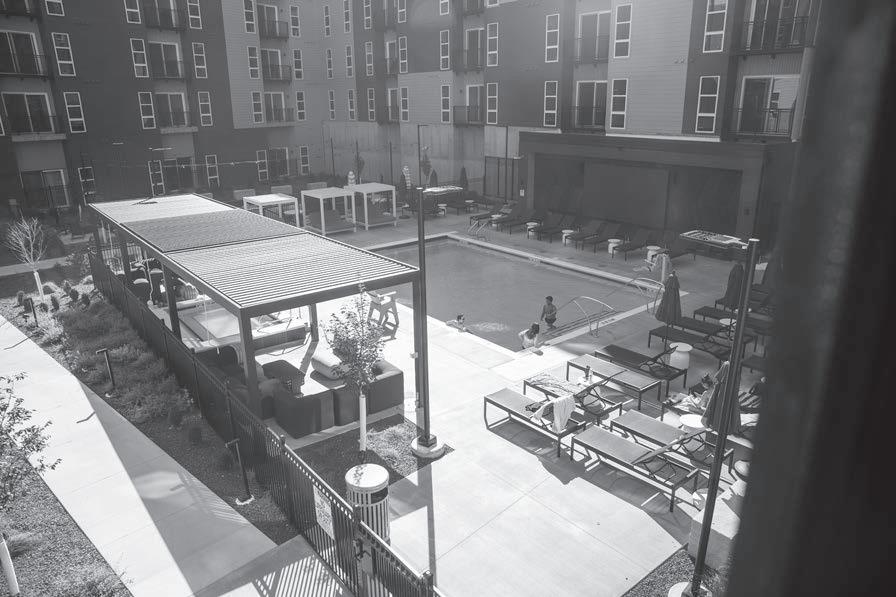
inley Merchant, community manager at Replay Iowa City, pointed out some positive aspects of their location being just outside of campus.
“A lot of our residents see our location as a positive, especially if someone isn’t looking to be right downtown in the heat of everything, with noise levels and tra c,” Merchant said.
Replay offers amenities are included in residents’ monthly rent.
These include a pool, hot tub, golf simulator, karaoke studio, dog park and spa, craft studio, jumbotrons, and fitness centers, marketing Replay as a student housing complex.
“We really focus on giving residents a uni ue experience compared to what they can get anywhere else,” Paige Ciceraro, leasing and market manager at Replay, said.
With the addition of Replay to the Iowa City area, other student housing complexes are feeling the added competition. RISE at Riverfront Crossings, The uarters Iowa City, and The Hive Iowa Apartments, among others, are all luxury student housing options dotted across Iowa City’s downtown.
cifically, is a complex located closer to campus. The complex touts an approximate walking time of 13 minutes to the Pentacrest compared to Replay’s 22 minutes.
“One of our biggest features is our proximity to campus,” Parks Bussanmas, community assistant at RISE, said.
Bussanmas said RISE gets lots of feedback from its residents and hearing all the di erent accounts allows the complex to improve.
The uarters Iowa City has changed the price of its deposits working to attract more students to its building, John Engler, community assistant at The uarters, said.
Previously, residents had to pay two months of rent up front, now, Engler said, they pay 530 as an annual fee instead.
Regardless of the apartment complex, Lakshmanan said she enjoys the vibe the di erent complexes create in the area near campus.
“All of these amenities are built for college students, which I love. Living here, it just feels like a safe community,” Lakshmanan said.
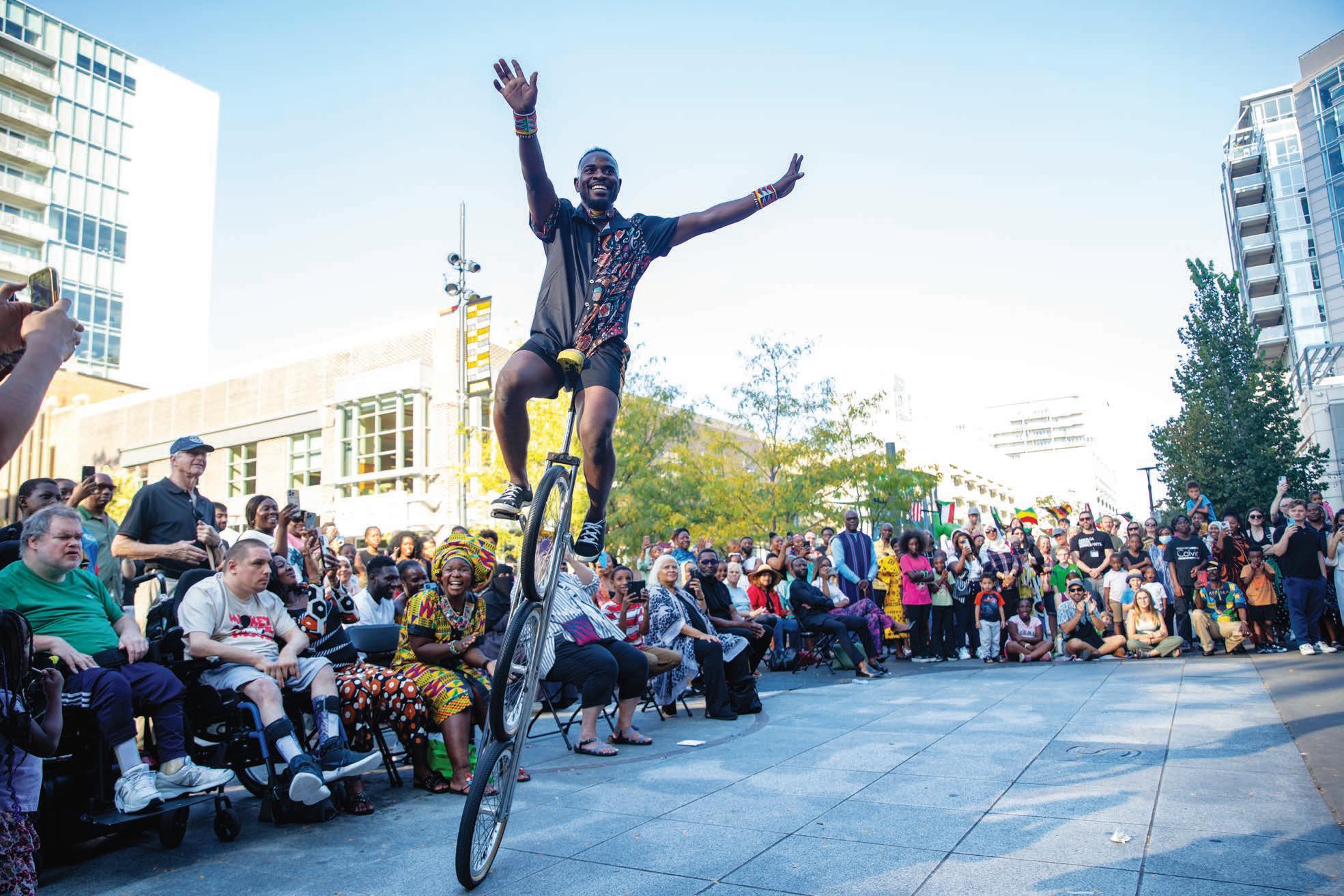

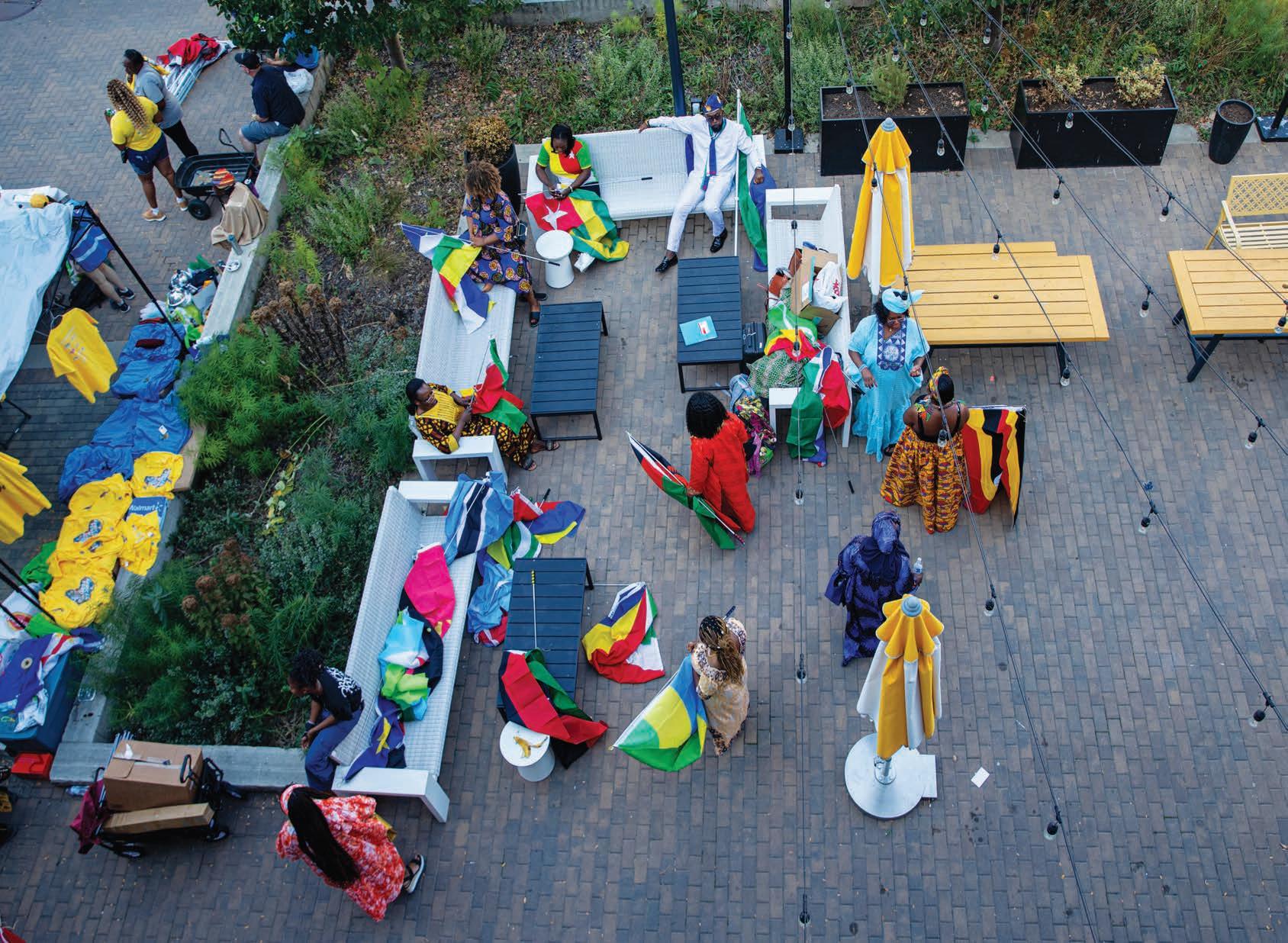



SPORTS Hawkeyes’ pregame routines
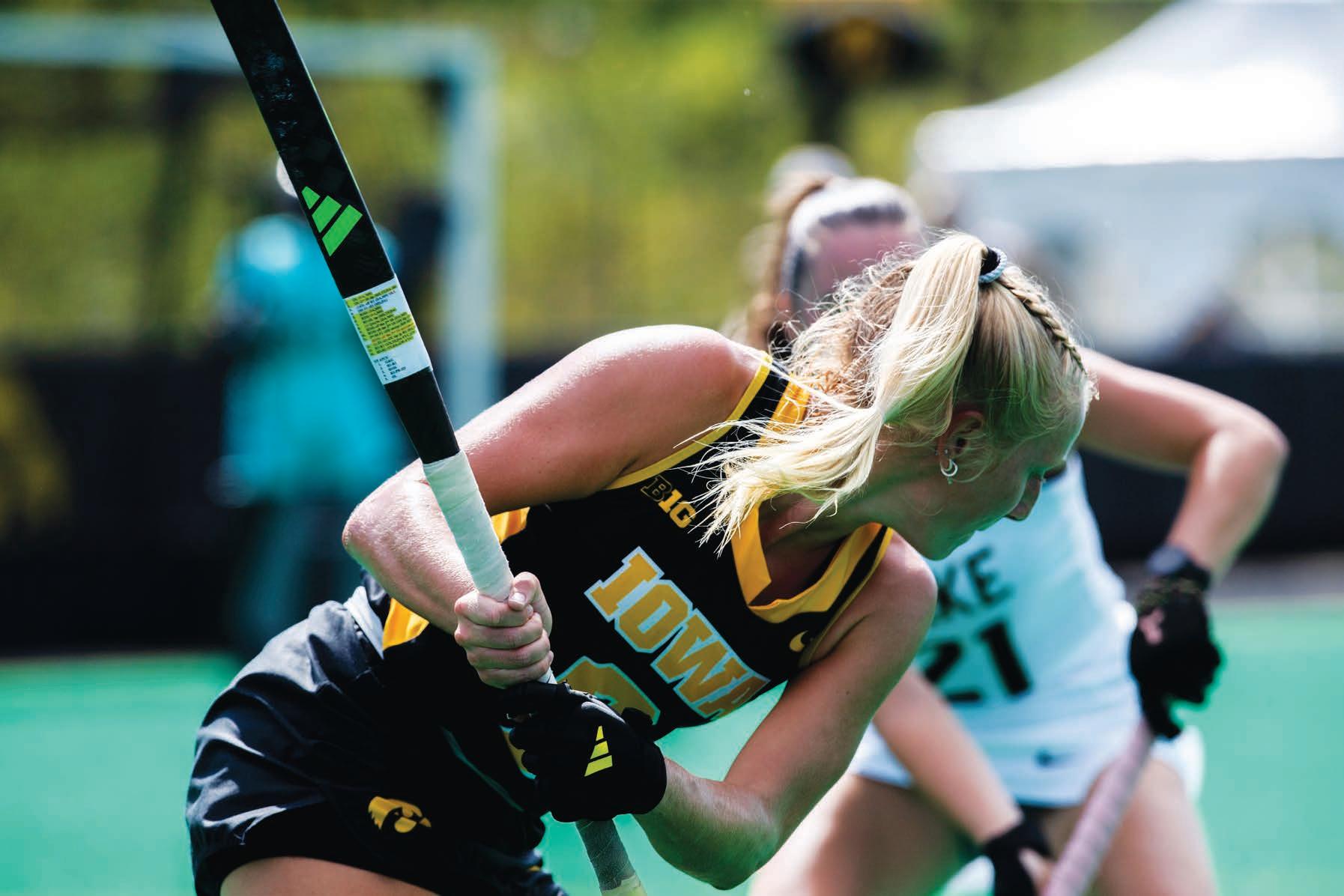
With sport comes tradition and ritual. From classical music to hairstyles, pregame routines and rituals, there is a wide range of customs used by University of Iowa student-athletes. Regardless of the sport, there will always be an element of tradition and routine.
While there is one common goal for a team, every athlete takes a different path to prepare themselves for competition. Some like to calm their nerves by listening to relaxing music or meditating, while others like to get fired up.
Most athletes use pregame routines to gain an extra edge over their opponents. If they did something a certain way or ate a specific food before a
The Iowa Hawkeyes have many different kinds of pregame routines across all of its 22 varsity sports.
Iowa football quarterback Mark Gronowski, like many other athletes, listens to music as part of his pregame routine; however, his choice in music is less than typical.
“I’m always listening to classical music,” Gronowski said at football media availability on Aug. 26. “Nothing like head banging or heavy metal or anything like that, just because I like to calm my nerves, and the emotions of the fans and and the people around me already get me going enough, so I just listen to classical music to calm myself as much as possible.”
Gronowski’s relaxing pregame routine has led to him becoming the all-
rushing touchdowns in five games this season.
Some like to make a routine of their appearance for games.
Third-year field hockey forward
Rachel Herbine said she wears the same hairstyle every game — two braids into a single ponytail. Herbine has three assists and one shot on goal this season for the Hawkeyes.
Some sports are more intense or physically demanding than others, but the same principle applies — routines create a sense of focus, control, and confidence.
Iowa women’s golfers Maura Peters and Ximena Benites stick to relaxed routines, as the team began working with a mental coach last season to better prepare their minds.
Iowa volleyball’s Vanzandt embraces change
The sixth-year played at three schools before becoming a Hawkeye.
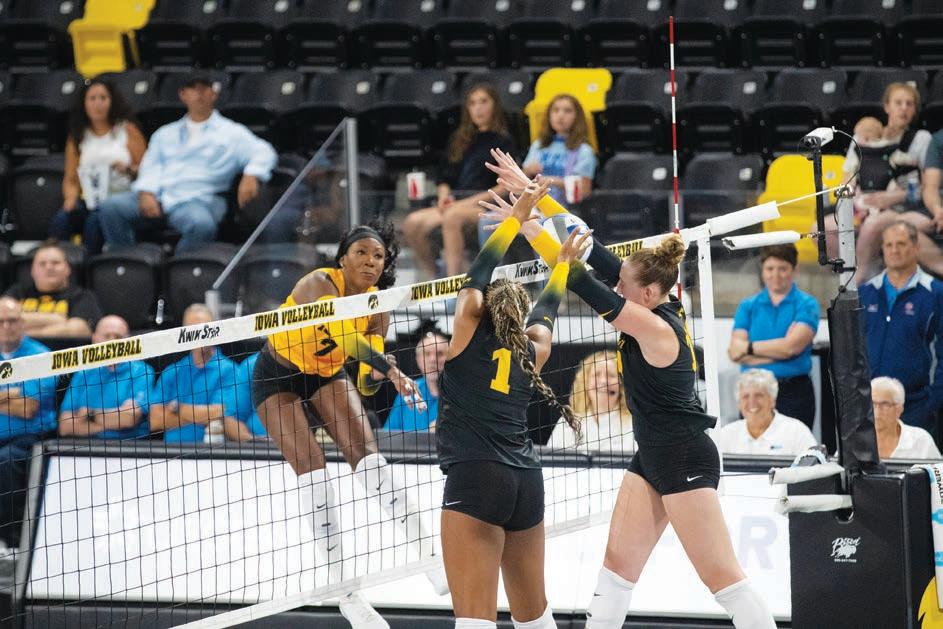
one [was] him being a God-fearing man, telling me about how he likes to pray for the team before [games].”
Playing at four different schools, working all the way up from junior college to the Big Ten, and switching to a new position — any one of these tasks would be challenging on their own.
Iowa volleyball sixth-year Chard’e Vanzandt, however, has taken all of them in stride. After two seasons at Chattanooga, Vanzandt decided Iowa City was the place to be, competing at a high level in the Big Ten and working under head coach Jim Barnes, who she personally connected with.
“When I spoke with him, he said a lot of things I absolutely loved,” Vanzandt said of Barnes. “The main
In the decade before Barnes took over the program, Iowa produced just one winning season compared to two winless campaigns.
Yet Vanzandt didn’t shy away from the team’s unproductive history. Rather, she wanted to rewrite their future chapters and produce success.
“I’ve always had the underdog mentality,” Vanzandt said.
Vanzandt began her career at Blinn College, a junior college in her home state of Texas, before starting her NCAA career at Louisiana Tech in 2022.
Three years later, the former middle hitter found her
nating distractions gives the Hawkeyes a boost in confidence.
“He’s gotten me, in the last month or so, to do breathing [exercises] before. So I’ve been doing that just to get myself calm before my round starts,” Peters said at media availability on Sept. 29.
“I personally read the Bible before I play,” Benites added. “That’s become my habit now, so I get calm by doing that, and it works.”
Benites also said the entire team has started doing body scans through an app called Calm. According to the Calm app, the body scan is a form of meditation involving paying attention to the body in
Zonnenberg finds impact on the field
The first-year embraces the unsung role of injector.

First-year midfielder Felicia Zonnenberg is quickly gaining recognition for her role in penalty corners, specifically as the injector, where she’s collected eight assists, helping the Hawkeyes amass a conference-best 32 goals this season. The injector is responsible for passing the ball as fast as possible from the outof-bounds line to their teammates on the outer crease of the goal line, allowing those players to then get a shot off before the opposing defense sets up its strategy.
To Zonnenberg, the role may seem easy and straightforward but actually features multiple moving parts. Her performance determines the Hawkeyes’ chances of scoring, and goals win games.
“You have to make sure you get the ball to the top where it needs to go first and foremost,” head coach Lisa Cellucci said. “It takes a lot of focus and precision with just that, and then being able to work inside and know where to go in case of a rebound opportunity is also on your mind.”
For Zonnenberg, getting this role goes well back into the preseason.
After experimenting with various penalty corner lineups during the preseason, the coaching staff ultimately placed Zonnenberg in the injector role, a position she sometimes played sometimes growing up in the Netherlands.
“She can really handle key moments under pressure and fatigue, and she is just a great goal scorer near the net, which is needed after the injector inbounds the ball,” Cellucci said.
Zonnenberg’s nine total assists rank best on the team and third in the Big Ten, one behind Northwestern’s Ashley Sessa and Aerin Krys.
A majority of Van Aalsum’s goals this season have come from the penalty corners, with most of them assisted by Zonnenberg. Their injector-to-scorer connection has strengthened since the season began as each player gets more and more comfortable with the other’s role.
“I definitely trust her to get the ball out to a good spot and in a timely manner as well as it makes
Wildman runs on competitive DNA
The first-year midfielder leads the Hawkeyes in shots per game and co-leads in assists.
For incoming first-year athletes, making the jump to Division I athletics and dealing with the initial pressure and high expectations is the norm. But for Iowa midfielder
Elle Wildman, these beliefs were not foreign but rather a part of her DNA.
Coming from a household where both parents played collegiate sports at Mankato State, Wildman was shaped from a young age to have that same driven edge.
“I grew up in a very competitive household,” Wildman said. “Between my parents and my older brother, we competed for everything.”
The Woodbury, Minnesota, native took little time to use what her parents had passed down to stand out during her high school soccer days. Wildman recorded a total of 39 career goals and 0 career assists throughout her four years at East Ridge High School.
She earned numerous accolades during her high school playing days, including four consecutive allconference honors, three all-state selections, and a nomination for Gatorade Player of the Year.
While Wildman’s high school success was noticeable, Iowa head coach Dave DiIanni’s 12 years of coaching experience has taught him there’s no guarantee on what type of player will show up come summer training, especially for incoming first-years.

graduation to be on the road to Iowa City for summer training.
total shots with 2 and shots per game with 2.33.
“Not getting any time to even transition into college, you never uite know exactly how uickly that transition will happen to be successful,” DiIanni said.
The transition from high school to the collegiate level had to be a fast one for Wildman. Wildman’s upbringing has suited her well she currently co-leads the Hawkeyes with four assists alongside, thirdyear midfielder Sofia Bush.
While Wildman has yet to find success in the net this season, this has not altered her aggressive
Iowa’s outside hi er credits coaching sta
The Daily Iowan: What’s one thing you like about being an outside hitter?
Gia McGrew: You get all the di erent types of balls. I think you get balls that are in system, out of system, everywhere on the court. It makes you have to be crafty if you want to be successful, and that’s one area of my game that I’ve always wanted to develop and get better at.
What’s one thing that stood out to you about Iowa’s program?
Hundred percent the coaching sta . The coaching sta , from the beginning, is one of the main reasons that I decided to go here. I think we have one of the most incredible coaching sta s ever.
Which

The first-year has started all 12 games for a top-ranked Iowa s uad this season, being an instrumental part in the Hawkeyes’ -2-2 start.
DiIanni was confident in Wildman’s ability to contribute to Iowa soccer during the recruitment process, but this especially rang true after a conversation with Wildman upon her commitment.
What sports besides volleyball do you enjoy playing or watching?
I like watching basketball. I don’t really play any other sports besides volleyball. I watch basketball, I watch football, but those are my main two.
to do to get better before I even get to Iowa City’ ” Dilanni said. “Wildman was very dedicated to developing her craft.”
Regardless of what year in school Wildman is, starting for Hawkeye soccer is earned not given.
“We are going to play the best players that we feel deserve to be on the field,” DiIanni said. “Anytime you get that from a freshman, you should feel pretty lucky.”

What’s the transition to the Midwest been like for you?
It was really cold in the beginning, but now that it’s warmer, it’s gotten so much better. I think now I’m better prepared for the winter. But honestly, it’s been great. I love it here, I think the city is beautiful.
Which Big Ten opponent are you most excited for this year?
All. I think because I’ve never gotten to experience games like that, I’m excited for all. I just want to soak up every moment.
What’s one word that comes to mind when you think of Coach Barnes?
The greatest. Oh, that’s two words, sorry. Greatest.
What do you think has been Iowa’s best game of the season so far?
I think that we’ve had a couple of great games. I think that we played well during our Loyola Chicago game, obviously our one against Butler. I think even though we lost, we played well, and we learned so much from Iowa State. I think that every game, we’re taking pieces from it and becoming more driven towards one goal, and it’s uniting us more as a team.
What is one goal you have for yourself this season?
I want to be the best teammate that I can be, making my team better by any means necessary.
MLB players should win AL and NL MVP?
was also the first switchhitter to win the Home Run Derby. Raleigh might not have the batting average of Judge, but his value to Seattle as a catcher, paired with his historic offensive season, certainly warrants an MVP award.

Cal Raleigh is putting together a historic season at the game’s hardest position, playing nearly every day behind the plate for the Seattle Mariners. Everybody wants to compare Raleigh and Aaron Judge in batting average, but that statistic has become outdated.
Hitting is so difficult in today’s MLB, so batting average doesn’t truly show the value of a player anymore. Sorry, old-timers. Raleigh leads Major League Baseball in home runs and leads the American League in runs batted in, two extremely important value stats.
Raleigh set the single-season MLB record for home runs by a catcher with 60 during the 2025 regular season. The Mariners’ catcher doesn’t shy away from clutch moments either. This season, Raleigh has posted a whopping 1.036 OPS with runners in scoring position. Raleigh is doing all of this while switch-hitting. He
Again, I’m a home runs and RBI guy. yle Schwarber leads the National League in home runs and RBIs, banging 56 bombs and driving in 132 runs. Don’t get me wrong, Shohei Ohtani is generational, but Schwarber is the most valuable player in the National League.
The best ability is availability. Schwarber played in all 162 games this season for the Philadelhpia Phillies. I understand he’s primarily a designated hitter, but that’s still extremely impressive in today’s game. Like Raleigh, Schwarber gets better with pressure. The 11th-year veteran reached an OPS of 1.00 with runners in scoring position. Schwarber has driven in 0 of those base runners in 165 at bats.
Schwarber’s availability, power, and clutch gene makes him an easy pick for National League MVP.
While the NL MVP is seemingly a runaway for Shohei Ohtani, the AL MVP conversation is a little bit tougher to decide. Aaron Judge, the face of the league’s most valuable franchise, The New York Yankees, has had yet another spectacular season. Judge is set to win the batting title while also hitting 53 home runs. Only two other players have ever done that before, the great Mickey Mantle and Jimmie Foxx.
Being the captain of the New York Yankees is one of if, not the most, prestigious honors in all of professional sports. The title of the captain brings in so much more responsibility beyond the field that can easily rattle a player if they are not prepared for it. Since being named the first captain of the Yankees since the legendary Derek Jeter, Judge has won the MVP award twice and even hit 62 home runs to break the most home runs in a single AL season. Judge has not just embraced the captain role, he has excelled in it.
While Cal Raleigh has put up a more than convincing case for him to win MVP, you have to give it to the role model of not just the
Yankees, but the MLB as a whole. Judge’s my pick.
The Japanese two-way ball player who many people are already calling the greatest player to ever play the game of baseball is well on his way to winning his fourth MVP award. Shoehi Ohtani won the award in 2021 and 2023 with the Los Angeles Angels and won it last year in his first season with the Los Angeles Dodgers. This season, Ohtani leads the league in OPS, runs scored, slug, and extra base hits alongside 55 home runs. In addition to all of those league leading stats from the plate, Ohtani also owns a 2. ERA in 1 appearances from the bump. The Dodgers haven’t had their usual season of dominance despite all of the starpower on their lineup. While stars like Mookie Betts and Max Muncy have struggled and the bullpen has been getting lit up, the only constant in the Dodgers lineup has been Ohtani. If Ohtani were to win the MVP award this season, he would become the first ever player to win the award in three consecutive seasons. If the MLB wanted to capitalize on Shohei-mania and continue to win over Japanese baseball fans, Ohtani is the right guy to win the award. While Schwarber puts up a good case, it is almost unfair for any player to be matched up with the juggernaut that is Shohei Ohtani. Look for Ohtani to continue his dominance in the postseason.



and seems wild or out of control, they are likely experiencing a sudden, involuntary motor disturbance.
A common story in Major League Baseball that features the yips is that of Rick Ankiel’s. A former pitcher for the St. Louis Cardinals, Ankiel famously melted down on the mound in Game 1 of the 2000 National League Division Series against the Atlanta Braves.Ankiel threw five wild pitches in the third inning, leading to two runs for the Braves.
The pitcher said there were multiple times on the mound when he would suddenly black out during his delivery, leading to no control over his pitches.

sections and noticing the sensations of each body part. Meditation reduces anxiety and improves mindfulness.
The crowd, opponent, or pres-
on the left side of the Hawkeyes’ offense. Vanzandt primarily played in the middle during his career, and shifting spots required a change in responsibility.
“The hardest position on any team is really that left side, that’s going to get a ton of sets,” Barnes said. “They need to come through for you. She’s someone we really believe in, and she’s made a big difference.”
The fourth-year head coach also admired Vanzandt’s commitment and devotion to Iowa early on.
“From the minute she committed, you could just tell she was all in,” Barnes said. “There were other schools trying to get to her, and she was a Hawkeye from the moment she committed.”
As a sixth-year, Vanzandt also stepped into a major leadership role for younger players on the team despite her own status as a newcomer.
“Chard’e’s like the mother to us,” first-year Gia McGrew said. “She’s just a wisdom ball. She has all the knowledge that we needed to know.”
McGrew also credited the positive dynamic between Vanzandt and Barnes.
“They respect each other so much, and I think that they just bounce,” McGrew said. “I think she’s just something special, and she’s just an incredible player.”
While Vanzandt’s accomplishments have only skyrocketed over her career,
can easily become detrimental to an athlete’s performance.
Think about a baseball pitcher having “the yips.” The yips are common in all sports but most apparent in baseball. If a pitcher has trouble locating
the hitter is quick to give credit to her teammates, including players like Claire Ammeraal. The fourth-year’s timely setting propelled Vanzandt past 1,000 career kills in Iowa’s Sept. 25 sweep against Maryland.
“Claire does a great job of setting really fast balls to the pins, which allows us to hit over the block and around the blockers, because we are an undersized team,” Vanzandt said. “I think that’s really worked out for us.”
Vanzandt also shouted out her younger teammates, including McGrew.
“Everyone is so funny, and they’re like my little sisters,” Vanzandt said. “I can always laugh with them in the gym, or if I’m sad or something, someone is going to make me laugh, especially Gia. I love them.”
Barnes ultimately expressed hope Hawkeye fans will come out to support Vanzandt and the program, especially with Vanzandt being in her final year of eligibility.
before each game.
Johnson became one of the best backs in Iowa football history, totaling a program record 21 rushing touchdowns in 2024. Johnson was talented, but seeing his calm nature before the game, it’s clear he created
an edge with his pregame routine.
Most Iowa athletes prefer calming routines, but first-year soccer midfielder Elle Wildman and fifth-year goalkeeper Taylor Kane are in the opposite group.
“My only thing is I listen to music, and in high school and club, I used to eat a banana before every game,” Wildman said. “[I listen to] a lot of rap before games.”
“I listen to the classic 2000s throwbacks, kind of fun and energetic pop songs,” Kane said. “The one, specifically, I always listen to is ‘No Hands’ by Waka Flocka.” Wildman has four assists through 12 games this season, and Kane, a grad student, has allowed just three goals in 540 total minutes with 12 saves.
According to St. Charles Health System, athletes’ mental training is just as important as physical training. Breathing exercises, positive self-talk, and progressive muscle relaxation help mitigate performance anxiety.
St. Charles Health also says visualization, mindfulness, and pregame routines can sharpen focus, leading to improved performance come game time. Hawkeyes use these routines to create an advantage over their opponents, and it leads to success across multiple sports at the UI.
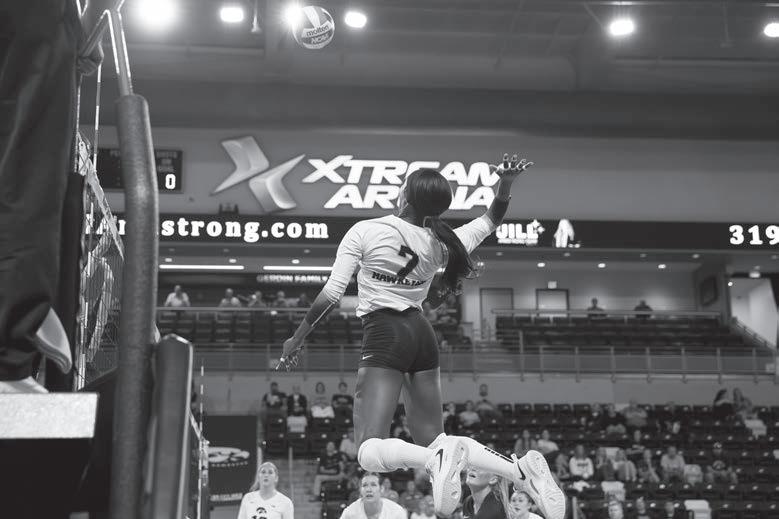
“[She’s] just a class act,” Barnes said. “We really want the fans to get out and see her. We only got her for a season, and she’s worth the ticket.”
Vanzandt similarly encouraged people to attend more Iowa games, especially with two contests, an Oct. 17 match against USC and an Oct. 19 contest against UCLA, set to be played at Carver-Hawkeye Arena.
“Pack the arena,” Vanzandt said. “Come to the games. Come support. And cheer more.”
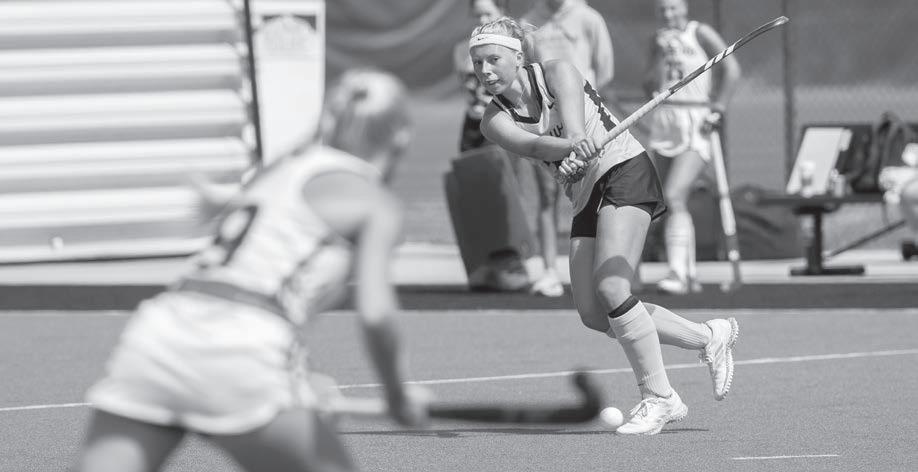
it easier for me to only have to focus on my shot and not where the ball is,” Van Aalsum said.
Cellucci, the coaching staff, and the team have all grown to count on Zonnenberg in the role of injector during penalty corners and have all noted she has a wide range of skills.
“She can be at the top of the corner hitting, sweeping, and tipping all things that other players do,” Cellucci said. “I truly think the sky is the limit for her, but right now, we are going to keep her at that spot until we really need depth in other positions.”
Missing scoring oppotunities from this position can have its effects on

players, but Zonnenberg has grown to embrace the responsibility.
“It’s a great way to get an easy assist, and even though I may not get an opportunity to score a goal, I always want to do what is best for the team, especially when those goals could mean winning or losing the game,” Zonnenberg said.






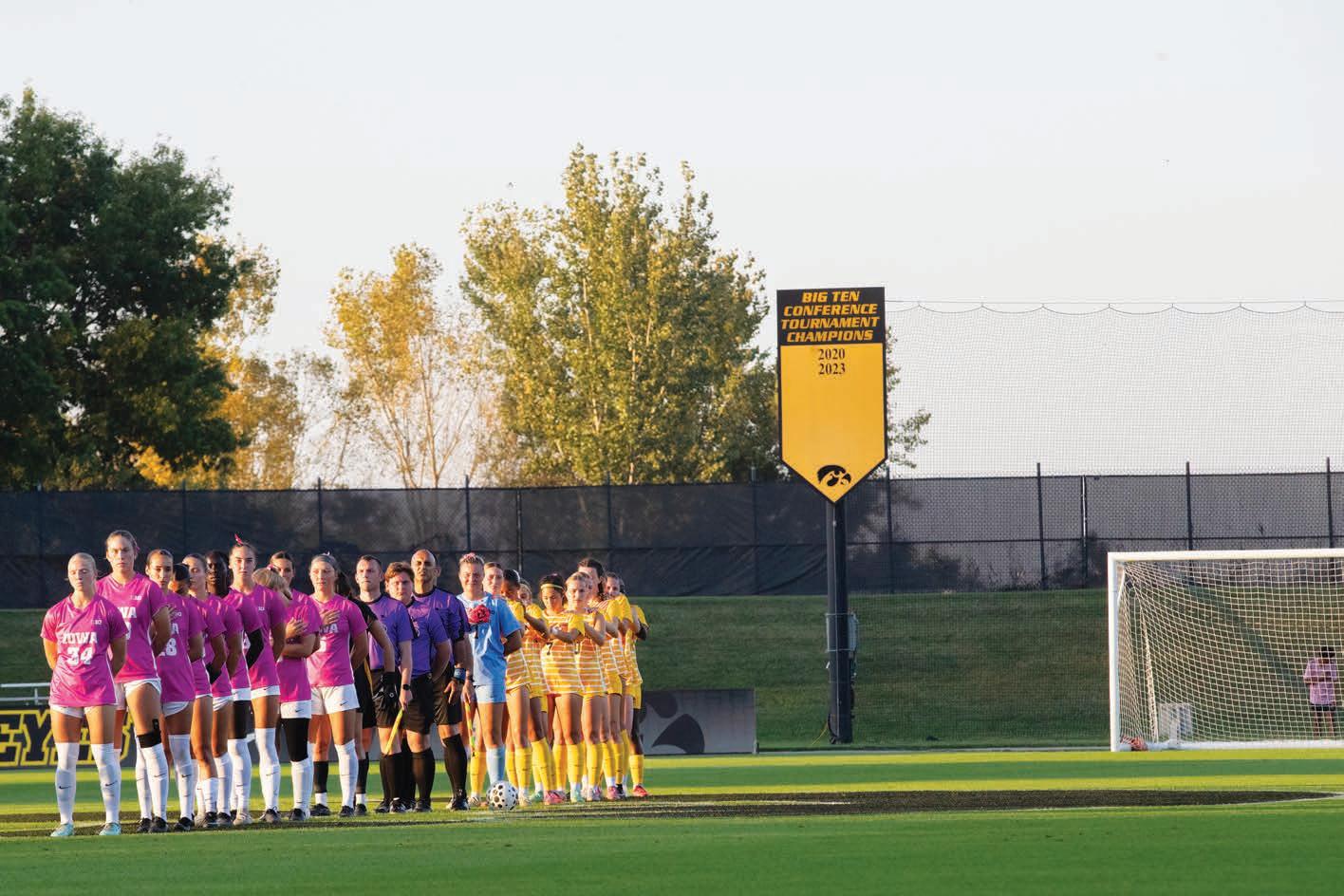

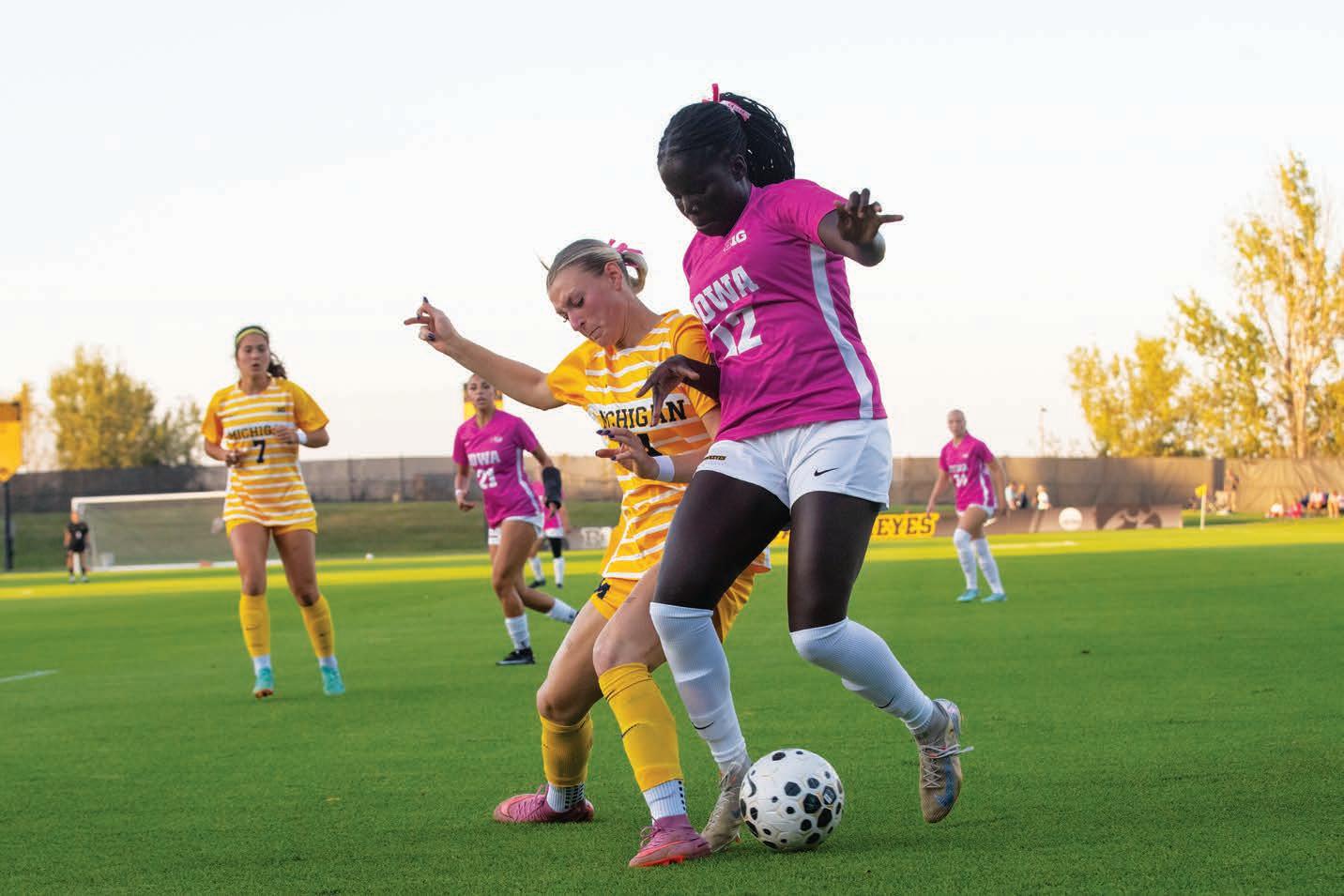





















An amateur's guide to spotting and surviving performative masculinity.





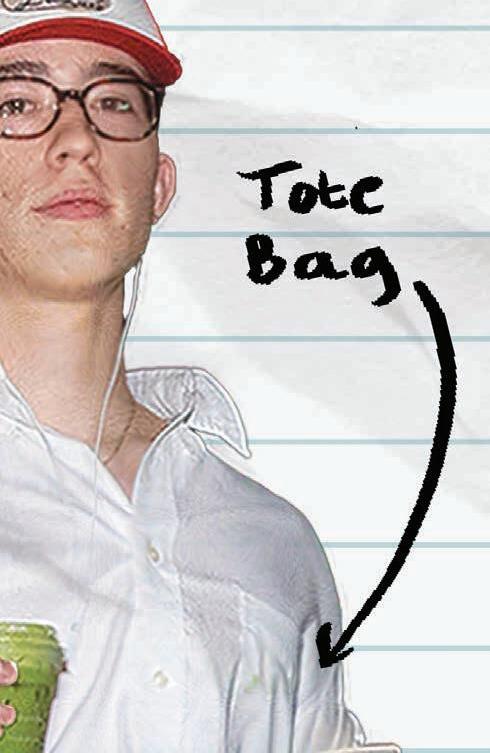


















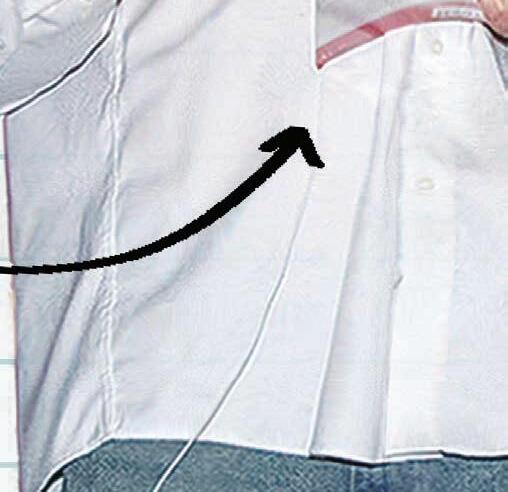


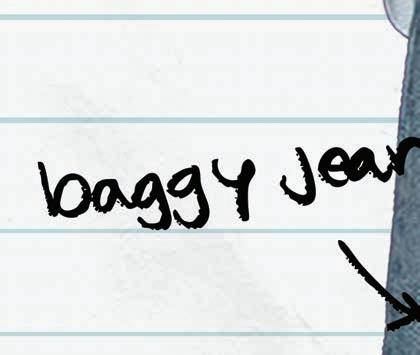




With performative males popping up on campus, learn how to spot them and navigate this new trend.















Performative masculinity 101
Navigating the TikTok trend's influence on college campuses nationwide.
If you’ve been lucky enough — or unlucky depending on your frame of mind — you may have seen a certain breed of tote-bag-carrying men roaming the streets, their numbers growing alarmingly.
You can smell their bright-green vanilla-, lavender-, or strawberry-flavored matcha from a mile away. You can hear the clinking of their carabiners, overcrowded with Labubus and various keychains, chiming in the wind.
They sit patiently waiting for their next opportunity to aunt their progressivism, proudly displaying their feminist literature like a peacock presenting its feathers during courtship rituals. If this species of man has caught your eye, then that means their public expressiveness is working.
This unique phenomenon has become known as performative masculinity. People all over the country are reporting sightings of these strange humans, and it’s important for individuals to spot some of their defining traits. Performative males can come in all shapes and sizes, but there are some fundamental attributes they share.
Thankfully, the University of Iowa campus provides a menagerie of performative male competitions, where people dress up, answer questions, and conduct short, improvised productions to see who can get the most in touch with their feminine side.
Recently,“Performative Male Contests,” displays of femininity and gusto originating on TikTok, have been popping up on college campuses nationwide. Participants bring props and show o for the cheering audience of mostly females.
The contests started on the East Coast before spreading to other well-known cities on the West Coast, such as San Francisco and Seattle. Once college students got wind of these viral gatherings, they began popping up at rapid speeds, mostly at prestigious schools, such as Yale and Columbia.
At the UI, two contests have occurred within the past month where the performative males of Iowa City ocked to the Pentacrest to compete for the highest honor: matcha and tote bags.
The Daily Iowan engaged in some boots-on-the-ground reporting at one of these local events to expose the inner

workings of a performative male. While analyzing the contestants, we identified some key components of this unique personality.
Exaggerated feminism is the central element of any performative male.
When it was their turn to give a speech, some contestants poured their hearts out, exclaiming their frustration with period cramps or the gender pay gap. Some even brought tampons and pads and tossed them out to the women in the crowd like candy at a parade.
Delia O’Keefe, a second-year UI student and a contest judge, helped select the most performative men.
“That component of feminism is really important to me. You gotta put women first, above everything else,” O’ eefe said.
Realism was important to second-year Kat DeBauche and third-year Evan Jimmerson, who judged the first performative male contest on Sept. 10. They didn’t want to feel the contestants’ performance, cre-
IC artist paints New Pioneer Food Co-op mural
Local artist Thomas Agran completes mural to promote fair trade.
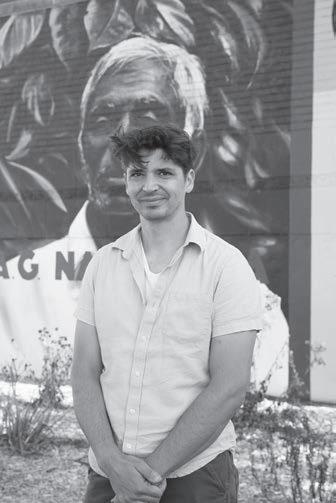
Local artist Thomas Agran recently completed a fresh mural at the New Pioneer Food Co-op in Coralville to celebrate October being National Fair Trade Month.
Agran was commissioned to create the work of art by Fairtrade America, a nonprofit organization focused on working with farmers and growing ethical crops. Each mural commissioned by Fairtrade features farmers from around the world and the product, ingredient, or herb the farmer grows.
For Agran’s mural, he depicted A.G. Nandasena, a farmer in Sri Lanka who grows Ceylon cinnamon plants. Agran, who typically creates landscapes, did extensive research on the specific variety of cinnamon and worked to make the mural as accurate as possible.
“It's got a leery, elaborate process compared to a normal cinnamon stick that would come in your spiced cider or whatever. The mural features different
moments in the process or tools that are part of that process of harvest ing and processing,” Agran said. “I also had some peace of mind that the imagery being provided to me was like authentic, real imagery, and I'm not sort of telling some story confused by the algorithm or something.”
For community members and Co-op employees, such as Mac Kilburg, who has seen several murals and signs go up at the New Pioneer Food Co-op, watching the process is almost as good as seeing the final product.
“It’s been so cool watching him as he’s been bringing the painting to life,” Kilburg said.
However, these murals do more than just bring communities together; they also bring attention to injustices across the globe, Kate Stritzinger, Fairtrade America’s director of brand, impact, and communications, said.
ating a paradoxical challenge.
“For [the contestants], it’s all in the aesthetics,” DeBauche said. “Like, are all these di erent elements of the performative man matching up?”
Jimmerson agreed, adding these men need to act convincingly showy and pompous, even if not portraying some of the typical elements of a performative man, something most performatively masculine people are already doing.
“They've gotta be, like, really pretentious. They’ve gotta be convincing. They can't look fake. They don’t have to have the traditional elements of a man, but they have to be cohesive,” Jimmerson said.
During the actual competition, the performative males were asked several questions to prove they were worthy of receiving the title. This included questions regarding a woman’s menstrual cycle, how to comfort women when they are crying or having a bad day, if Marie
Antoinette deserved what happened to her, and even the contestants’ favorite “therapy buzzword.”
All of their answers contributed to how they would ultimately be judged and who would be ranked as most performative of the males. Additionally, the dedication to feminism was supported by the person's sense of fashion.
For their physical attributes, this species of men follows a fairly strict dress code with several variations; they wear baggy jeans or jorts and pants with lots of pockets, a graphic tee or oversized sweater on top of a button-down, collared shirt. Although these outfits bring them much luck, the magic is in the accessories.
From the top down: these performative males may wear wire-rimmed
Andy’s redefines traditional pastries
Andy’s Pastry Shop displayed its dietary-inclusive menu at the Iowa City Farmer’s Market on Sept. 27.
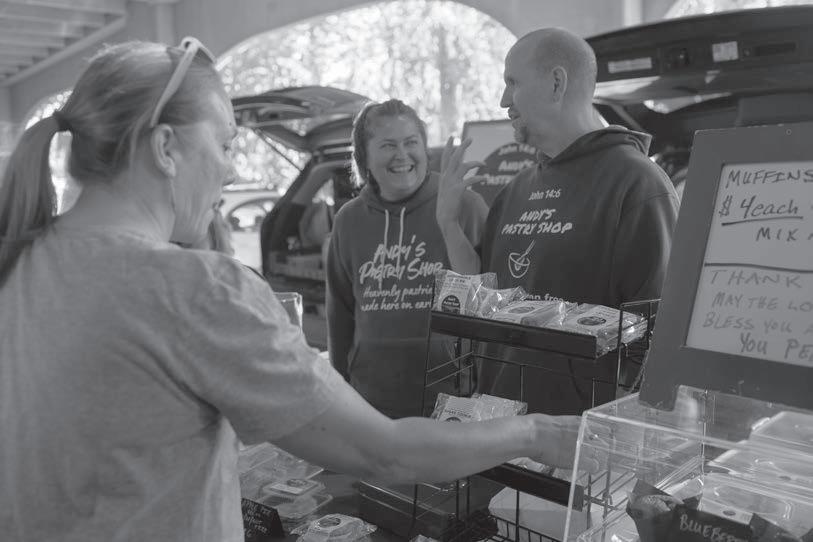
“A lot of folks are not making a decent living, despite working way over 40 hours a week. We see that as an injustice, and Fairtrade is really about trying to change that by getting brands to sign on to paying more, and then the farmers themselves are also agreeing to certain social, environmental, and economic standards as well,” Stritzinger said.
Creating murals that reflect society is something Agran enjoys doing. He said murals that were strictly business, billboard and advertisement-like don’t add to a story in a culturally nuanced way.
“When there are opportunities to do murals that either really engage with the community or have a more interesting political statement, I think those are the kinds of murals that have built the environment that I want to live in… I don't want to live in something if it's always perfect and clean and neat and tidy,” Agran said. “To have the built environment to also
A dairy-free, gluten-free, and vegan cookie is bound to raise culinary questions. For something so small, it sparks quite the controversy in the world of desserts.
Andy Morlan doesn’t just challenge those questions; he takes them, breaks them into a million gluten-free pieces, reassembles them in his kitchen, and bakes them into something so satisfying, even the most traditional pastry-enjoyer forgets to ask what it's made of.
At a buzzing Iowa City Farmers Market on a Saturday morning, Andy’s Pastry Shop might look like any other baked goods stall. Trays of cookies, slices of pie, flavored muffins, and generous scoops of powdered puppy chow all sit neatly atop a table, backed by a friendly, patient vendor.
But upon closer look, you’ll notice the quiet disclaimers: gluten-free, dairyfree, vegan. These aren’t the average diet-culture desserts, though — there’s nothing overtly trend-following or self-righteous about them. They’re the pastries that make people double-check the label, simply because they taste too good to be "missing" anything.
“It’s really just good, homemade food,” Cody Ruth, an Iowa City local, said. Ruth was browsing the market with his wife, Augwenda Ruth.
“Recently, our company ordered from here, and everyone thought it was wonderful,” Augwenda said. Before starting his business, Morlan worked at University of Iowa Health Care as a surgical technologist. During his time there, he frequently cooked and baked on the side, experimenting with new reicpes.

touch and human scale, I think is a good thing.”
Although Agran is depicting farmers from around the world, he finds a way to incorporate his home life into his paintings. Most of the time, his signature on the mural is made up of his daughter’s name, which he hides somewhere within the mural.
These murals show the importance of paying attention to the origin of one’s food, especially since co-ops tend to be more fair towards farmers who take care in the harvesting and processing of food one eats,” Stritzinger said.
“Every product has a story. I think more
now more than ever, we re seeing just how connected we are as humans,” Stritzinger said. “That understanding where the products you re consuming are coming from is actually uite a joyful experience of understanding, like, How is this grown ’”
Stritzinger said one of the most crucial parts of Fairtrade is giving farmers voices, which contributes to the power dynamics and connections within the company.
“Fairtrade is co-owned by farmers. They have 50 percent of the voting power. When we re talking about our connection to farmers, it s very genuine. There s not really a distinction between farmers and Fairtrade. It s like we are one,” Stritzinger said.
on the side, experimenting with new reicpes. recipes. After enough friends and coworkers urged him to “do something” with his talent, he got licensed, took a leap, and started selling out of his home kitchen.
Andy’s Pastry Shop’s baked goods don’t only sell at the market, Morlan said. They can be spotted at Hy-Vee stores, Bread Garden Market, Midnight Co ee, and ABC Acres in Cedar Rapids. The baker has come a long way from his side hobby.
Morlan’s interest in alternative baking came when his wife went dairy-free. Like many people with newly discovered food sensitivities, she didn’t want to give up her favorite treats, and Morlan didn’t want her to either. So, he began experimenting with substitutions.
Soon after, his friends began to re uest recipes catered toward their own food sensitivities. That’s when Morlan realized this was more than a personal project it was a need in the community.
What sets Morlan’s pastries apart isn’t just the dietary labels, though. The nostalgic, homemade avors, soft and moist texture, and unmistakable love poured into every sweet treat define them, according to their website.
customers with celiac disease or serious allergies can shop with peace of mind a detail that hasn’t gone unnoticed. “They have such a wide variety of sweet treats, and the fact it’s a dedicated gluten-free facility is cool, too,” Ariana Chapas, a local shopper strolling through the market with friends, said.
Still, it’s not always easy being the “alternative” bakery stall, especially not when posted up right next to a bakery with buttery croissants and traditional, sugary chocolate chip cookies. Morlan knows that, and he embraces it.
Morlan reminds customers a cookie isn’t defined by the ingredients it “must” contain, but by the joy it brings. And joy, as it turns out, doesn’t re uire dairy or gluten.

Each batch is made by hand in Morlan’s home kitchen, with help from his wife and kids, making Andy’s Pastry Shop a truly family-run labor of love. It’s also a dedicated gluten-free facility, which means
Clay art embodies Mesoamerican spirituality
“Dreams and Reflections
In a gallery filled with swirls of color and intricate forms, sculptor Narciso Meneses Elizalde invites viewers into worlds deeply rooted in Mesoamerican traditions. His exhibition “Dreams and Reflections of Flower Worlds” presented polymer clay sculptures celebrating Indigenous culture.
Originally from Hidalgo, Mexico, Elizalde moved to Iowa at 15 years old and grew up in Iowa City. He went on to earn a Bachelor of Fine Arts from the University of Iowa in 2013.
“I’ve been doing sculpture since I was a little kid, actually with modeling clay,” he said. “It was playful and forgiving. Over time, though, my work has become more meticulous. The colors, the marbling, the way shapes ow together now there’s a deeper intentionality behind them.”
The sculptures in the exhibition are distinguished by vibrant color combinations and symbolic imagery. They depict humans alongside what Elizalde refers to as “other-than-human beings,” engaged in rituals connected to renewal, gratitude, and harmony with the natural world.
Current Public Space One artist in residence Syon Davis was particularly drawn to Elizalde’s use of color in his exhibit.
“The richness of Nars’ use of color really sticks out to me,” Davis said. “[Narciso’s] work really reminds me that the work around the ritual specialists is like a portal for us to be able to experience the fullness of reality, which isn’t even 2D or 3D, it’s 5D.”
Elizalde’s themes of spirituality and narrative are what caught the attention of PS1 Facilities and Gallery Director Hannah Givler when reading about his exhibit proposal.
“All of the volunteer team had a chance to read it, [and] see images of his work,” Givler said. “I think one of the things about Narciso’s work that the team responded to was the depth of storytelling inside of it.”
Givler was drawn to the level of intricate detail within

the work “Winged Mirror Emerging Reborn and Deified from Sacred Water Basin.”
Made from polymer clay and an obsidian mirror, it consisted of a brightly-colored green and orange mirror above a purple water basin. The mirror itself was set inside an intricately tied knot from which two figures intertwined above it.
Givler pointed out the finer details including the blue eyes lining the wings and the nine shell icons inside the water basin, and she noted each icon contained spirals of color.
“Each of these elements is truly intentionally placed,” Givler said. “Just zooming in, seeing the individual spirals within them, it really touches me as somebody who also makes things.”
Elizalde is deliberate in his use of cultural symbols, emphasizing the responsibility of using Mesoamerican culture as inspiration in an ethical way.
“I was concerned with how careless people are with this kind of thing,” he said. “I really wanted to actually learn and know what it was that I was utilizing in my work more in depth.”
His commitment to studying traditional philosophies has brought him into contact with ritual specialists in Mexico, who continue to preserve ancestral knowledge.
Family and community also in uence his work. On his mother’s side, relatives were traditionally trained healers, and their spiritual practices remain an important part of his personal history.
Today, he lives in Cedar Rapids with his two sisters and spends much of his time in nature, finding connection in the presence of rivers, plants, and animals.
Ritual specialists have shaped the direction of his artistic work. He views them as cultural anchors whose knowledge could be in uential worldwide.
“Their work is vital, not only in their communities but to everybody,”Elizalde said. “Especially with our situation right now globally.”
In addition to his sculptures, Elizalde is participating in a documentary project. He is collaborating with Revitalizadores del Papel, a collective supported by PS1’s Big Field Fund, to help revive the manufacture and ritual use of amate paper in the Otomí-Tepehua Highlands of Mexico.


of spiritual forces.
“Everything has a force,” Elizalde said. “Plants, animals, wind, water the world is alive with sacred energy in motion.”



proudly display a mustache, and be plugged into their wired earbuds, best for listening to artists such as Clairo and Mitski. They feature carabiners hanging from oversized belt loops, upon which dangle keychains with nonsense phrases or witty quotes, such as one that second-year Skyler Kramer sported, which had “I’ll probably still lose these,” written on it, as well as the collectible plush toys known as Labubus.
The performative male almost always holds onto a canvas tote bag covered with pins displaying their love for women. One contestant proudly displayed pins featuring Hillary Clinton‘s ‘08 campaign and the university Democrats. They drink out of reusable water bottles with feminine imagery to appear more soulful and in touch with nature.
Many of these canvas tote bags also contained vinyl records, such as Beabadoobee, Laufey, and most importantly, Clairo. Most contestants also carried around books, such as “Fahrenheit 451,” “John Proctor is the Villain,” and anything written by Sylvia Plath. Notebooks were also a hot commodity, as many contestants wrote flowery poems that were read aloud to viewers.
In a flashy way, most of the poems included references to the intelligence and beauty of women. Similarly, many contestants gave shoutouts to important women in their lives, including one contestant’s single mother, one’s lesbian sister, and Ruth Bader Ginsburg.
Many contestants also carried skateboards — some of which were truly performative as the user couldn’t ride them — and guitars, which were either used to perform songs for the audience or to look cool.
Some people describe the performative males as “posers” akin to old archetypes from the 1990s and early 2000s. In this case, these men aren’t trying to be cool for each other; they are trying to show off their nonchalant intellect and emotional availability to the large crowd of women forming a horse shoe around the competitors.
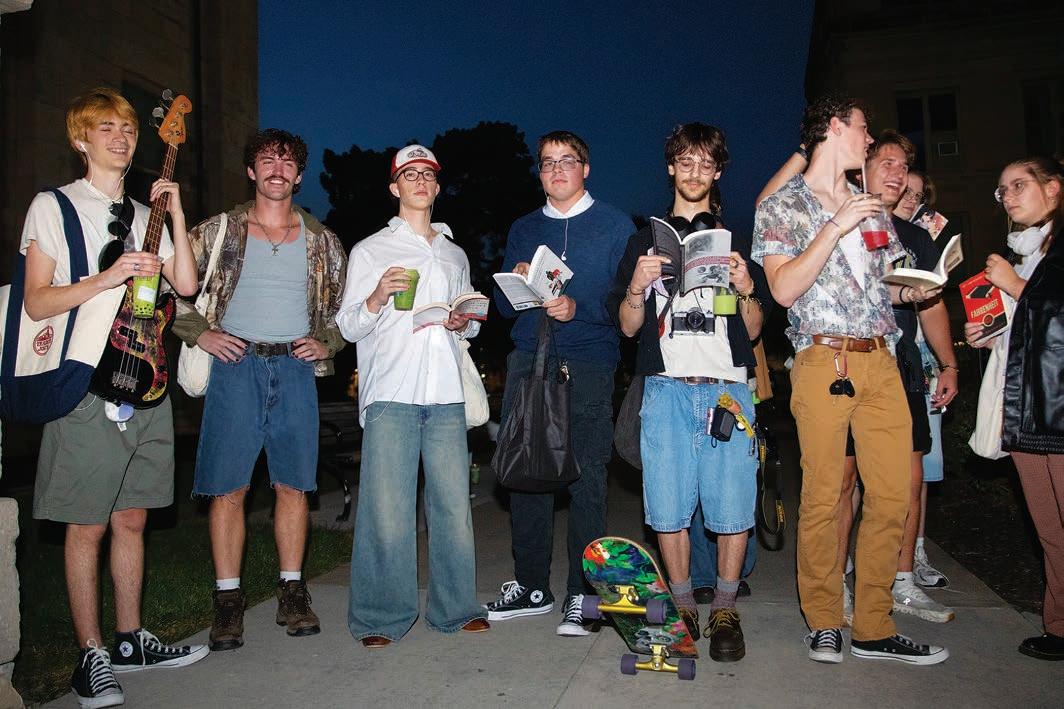
Despite the difference, the fundamentals of both archetypes are similar, as they depend on trying to be someone they’re not.
From a more psychological standpoint, some participants argued all gender is performative. The gender norms we all live with are not something we were born with.
“The environment dictates who I am, you know? I grew up with a very feminist mom, a lot of thrifting places, a lot of bisexuals, and a lot of performative men,” Kramer said.
Gender roles in our society could be traced back to our fundamental need as humans to be a part of a group, and in this, there is something to be admired about performative males. It takes a certain type of courage to purposefully act
and dress against thousands of years of preconceived notions.
However, just because these contests are lighthearted and silly doesn’t mean they’re making fun of men who live the lifestyle. According to attendees, there’s


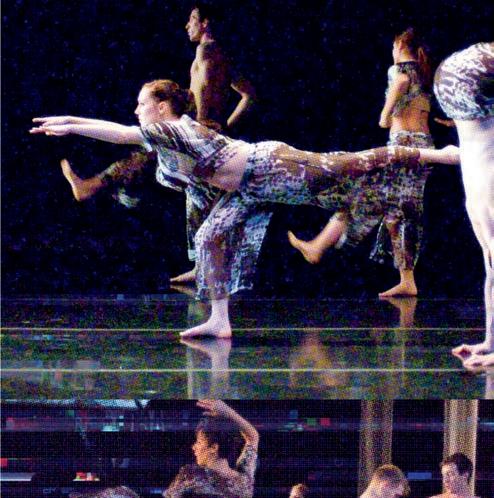

nothing wrong with being in touch with your feminine side, even if it’s mostly a performance.
Event organizers said while performative males get a bad rap for being manipulative, the people putting on the act are as genuine and kind as anyone. These contests have built a community for performative men, Kramer said. Jude Geerdes, who won the first performative male contest and was a judge for the second, and Kramer met each other by attending.
While these contests are trending online for people to laugh at, they can, in fact, create community — even if performative. Whether you view performative males as scheming manipulators or soulful feminist allies, now you, too, can navigate this new trend.
